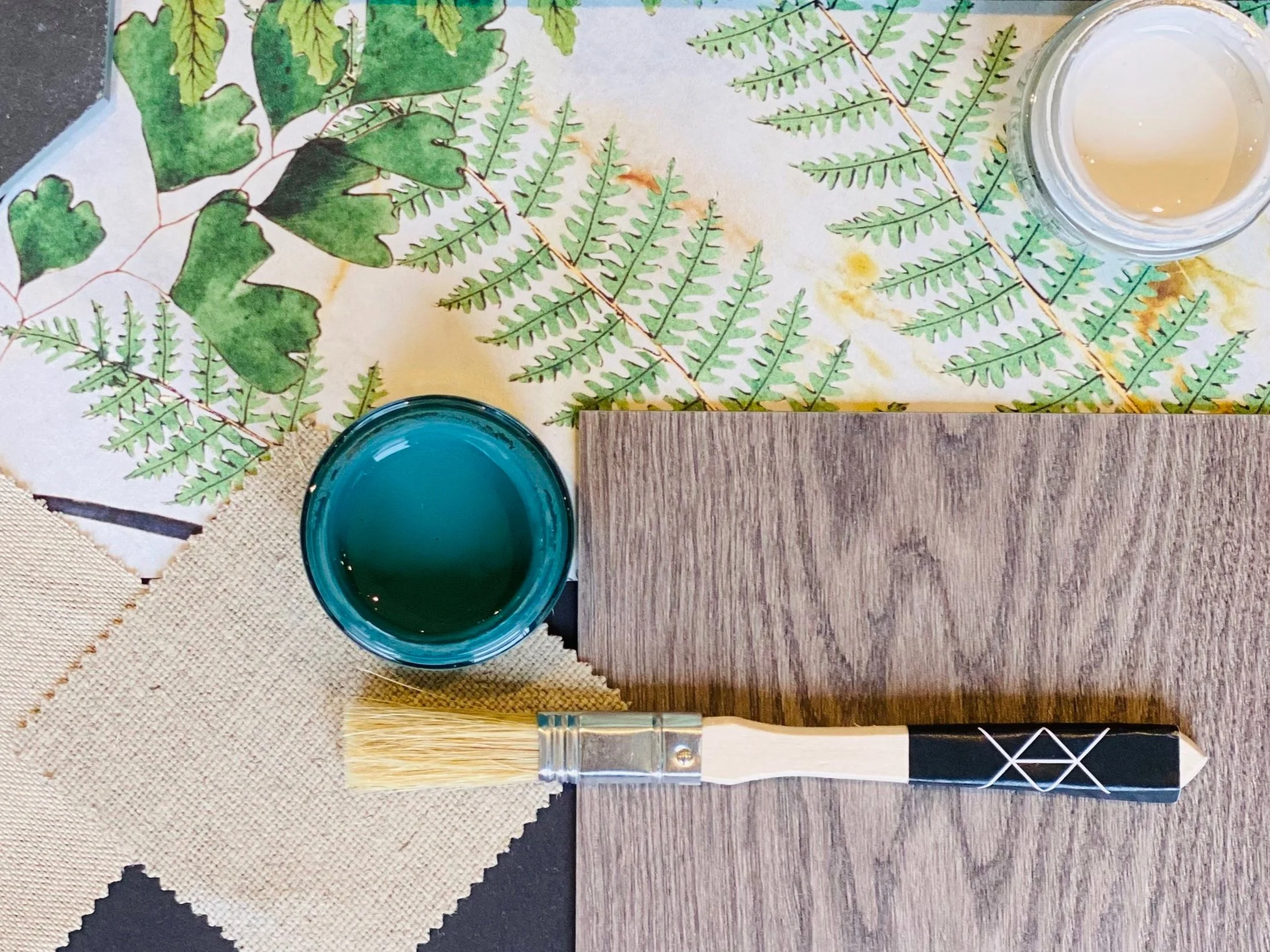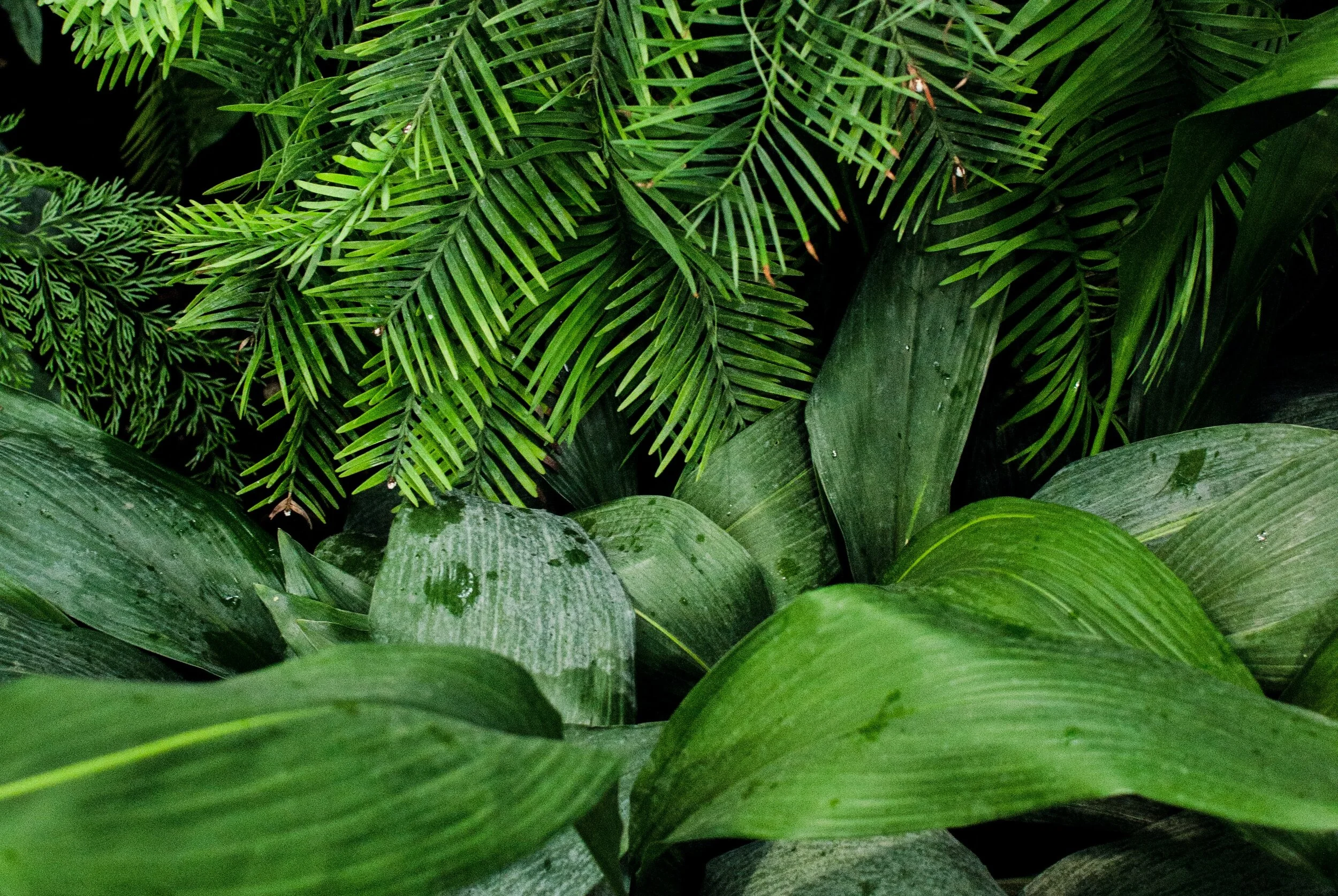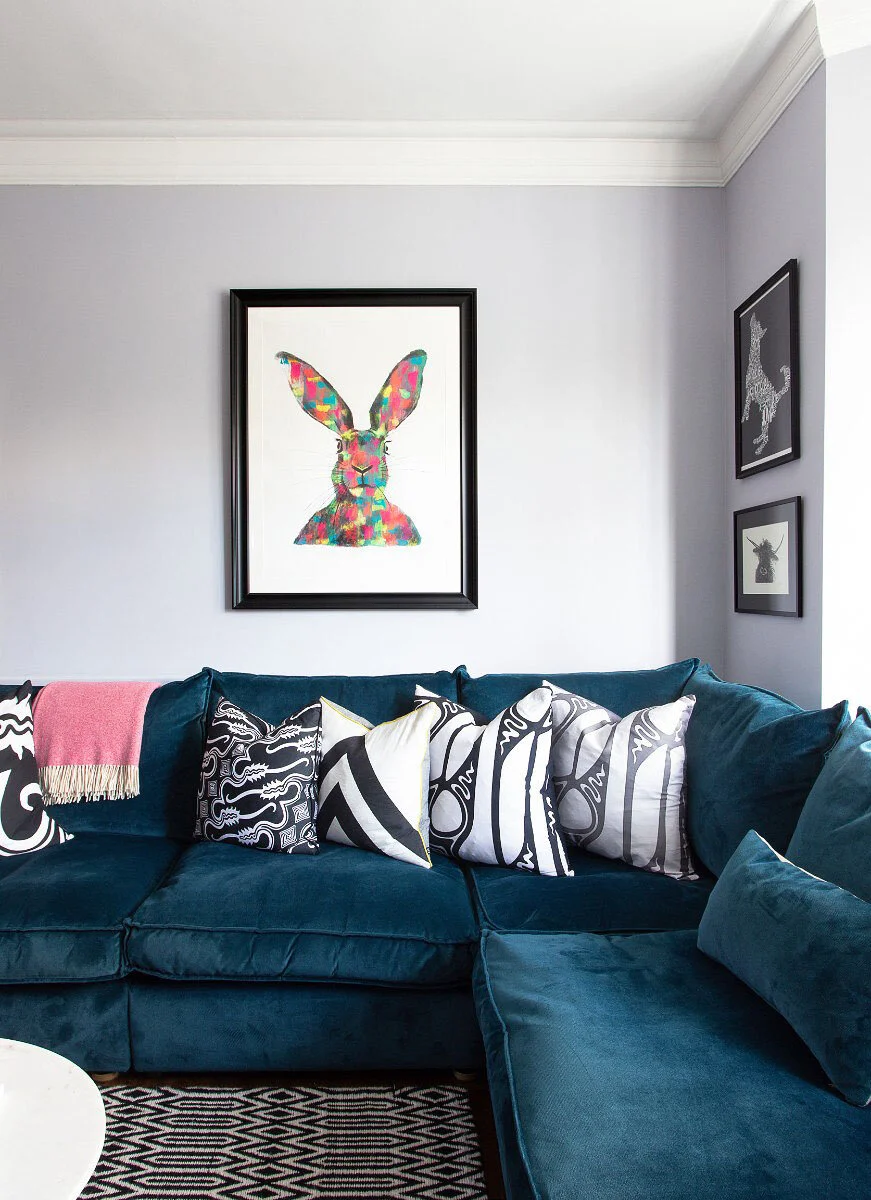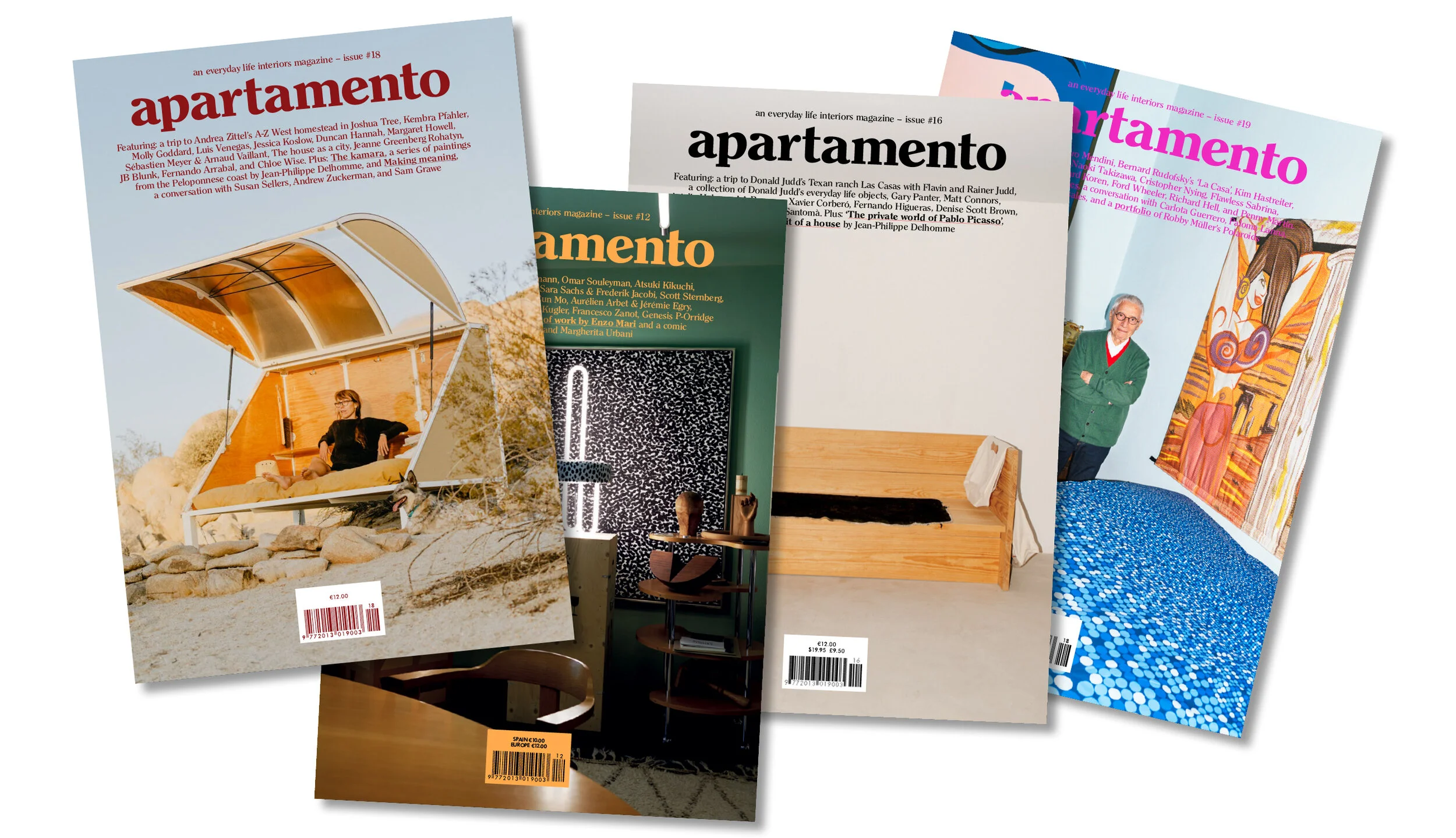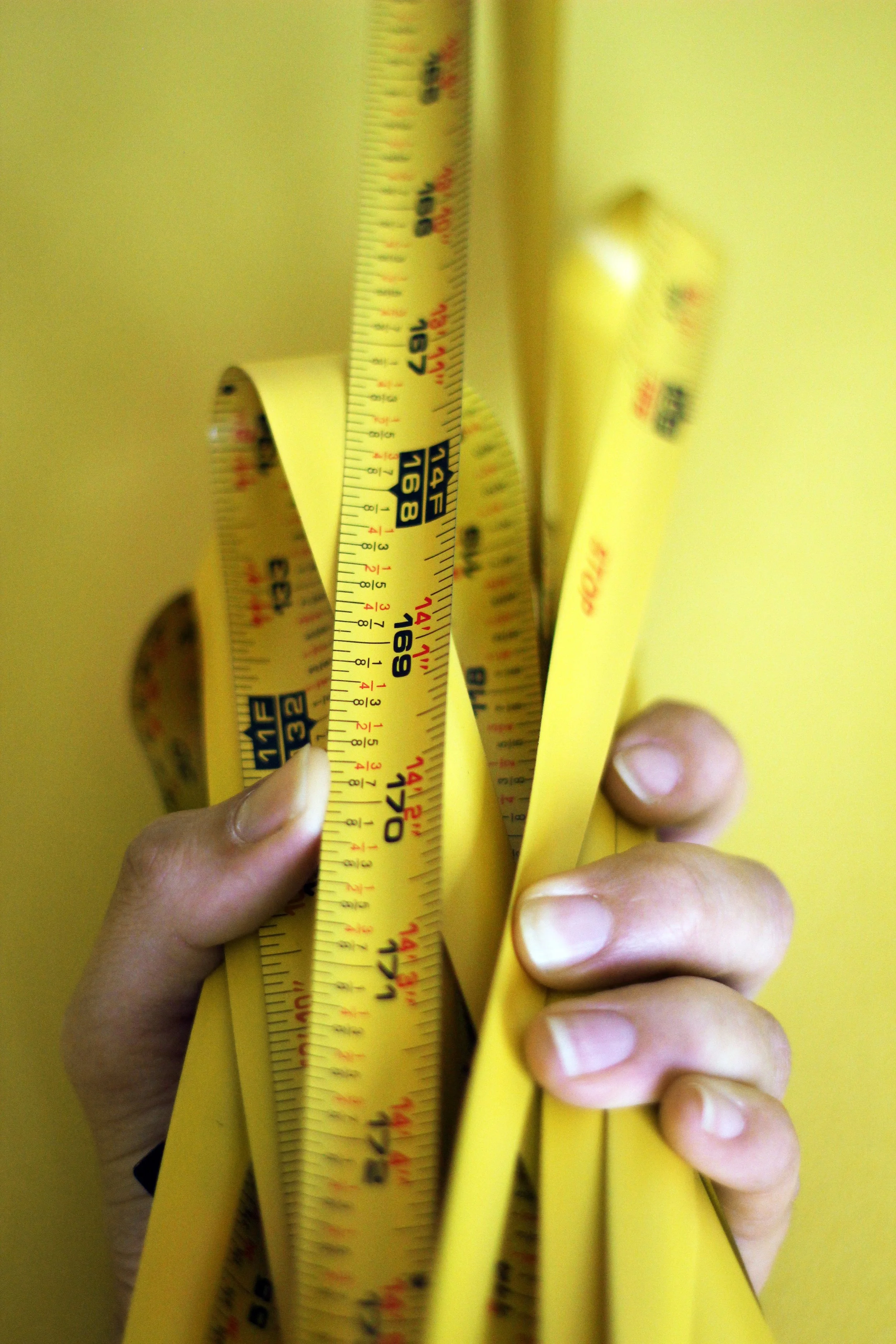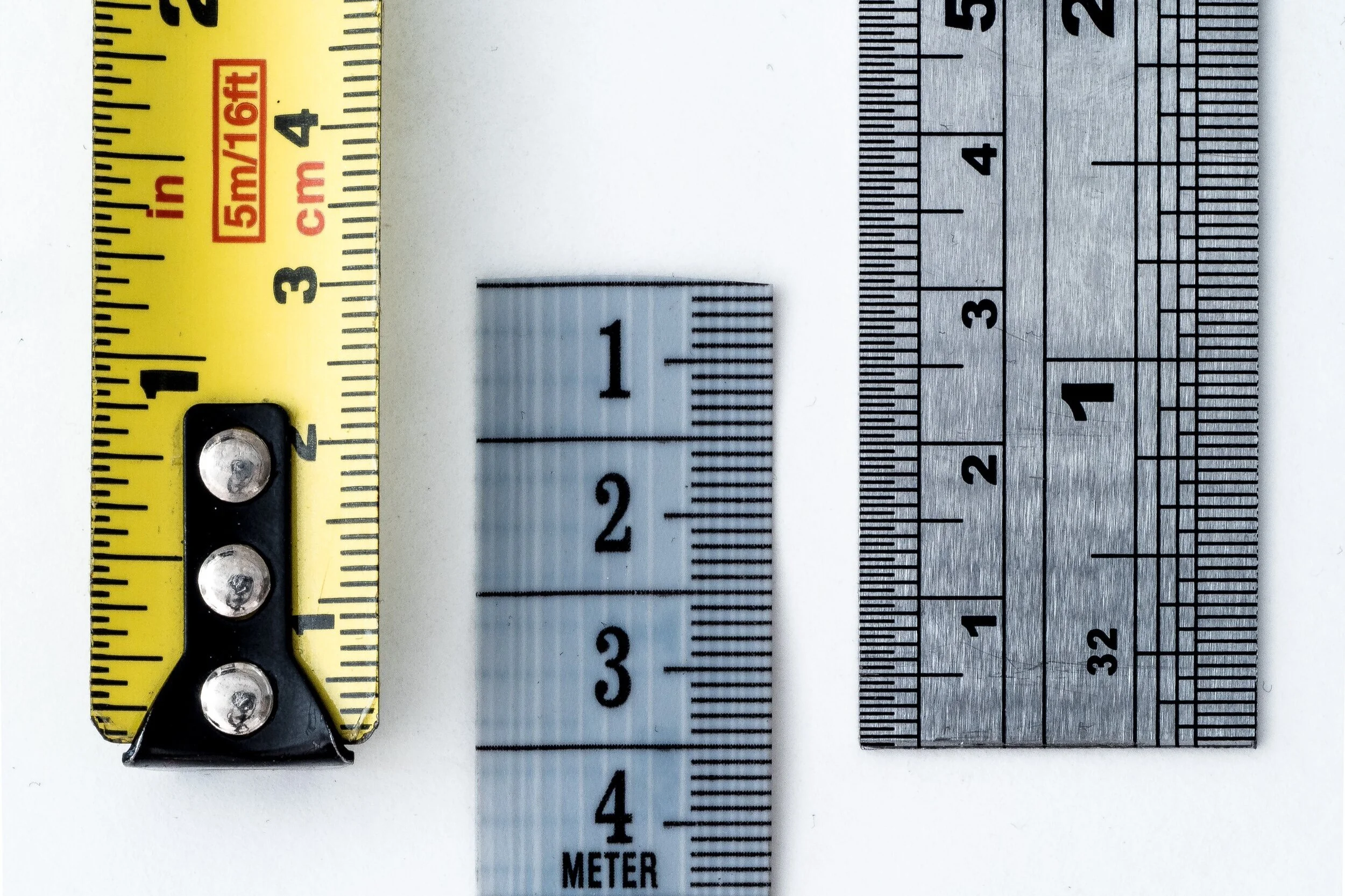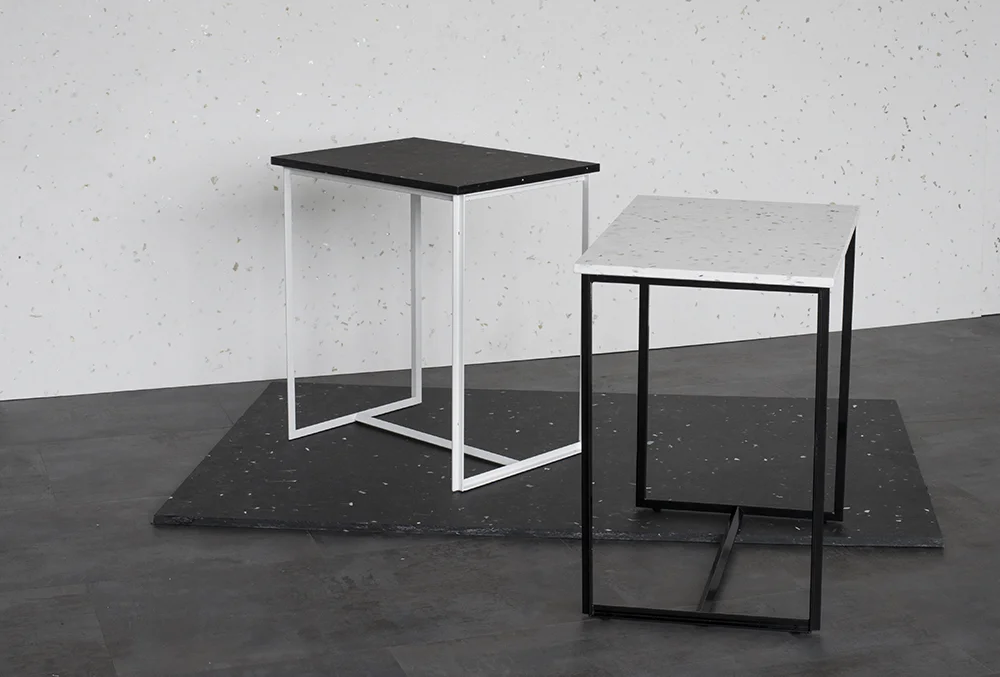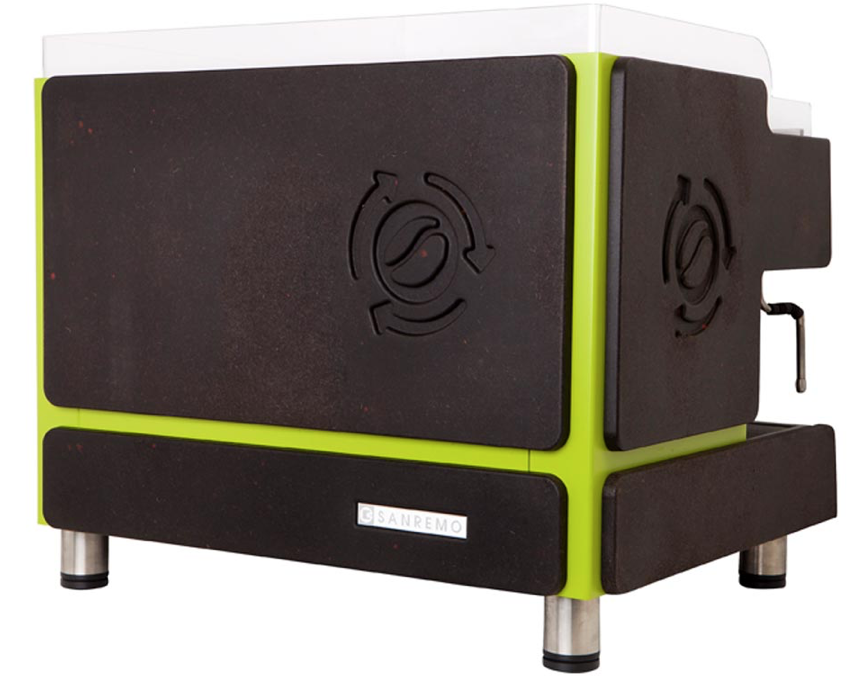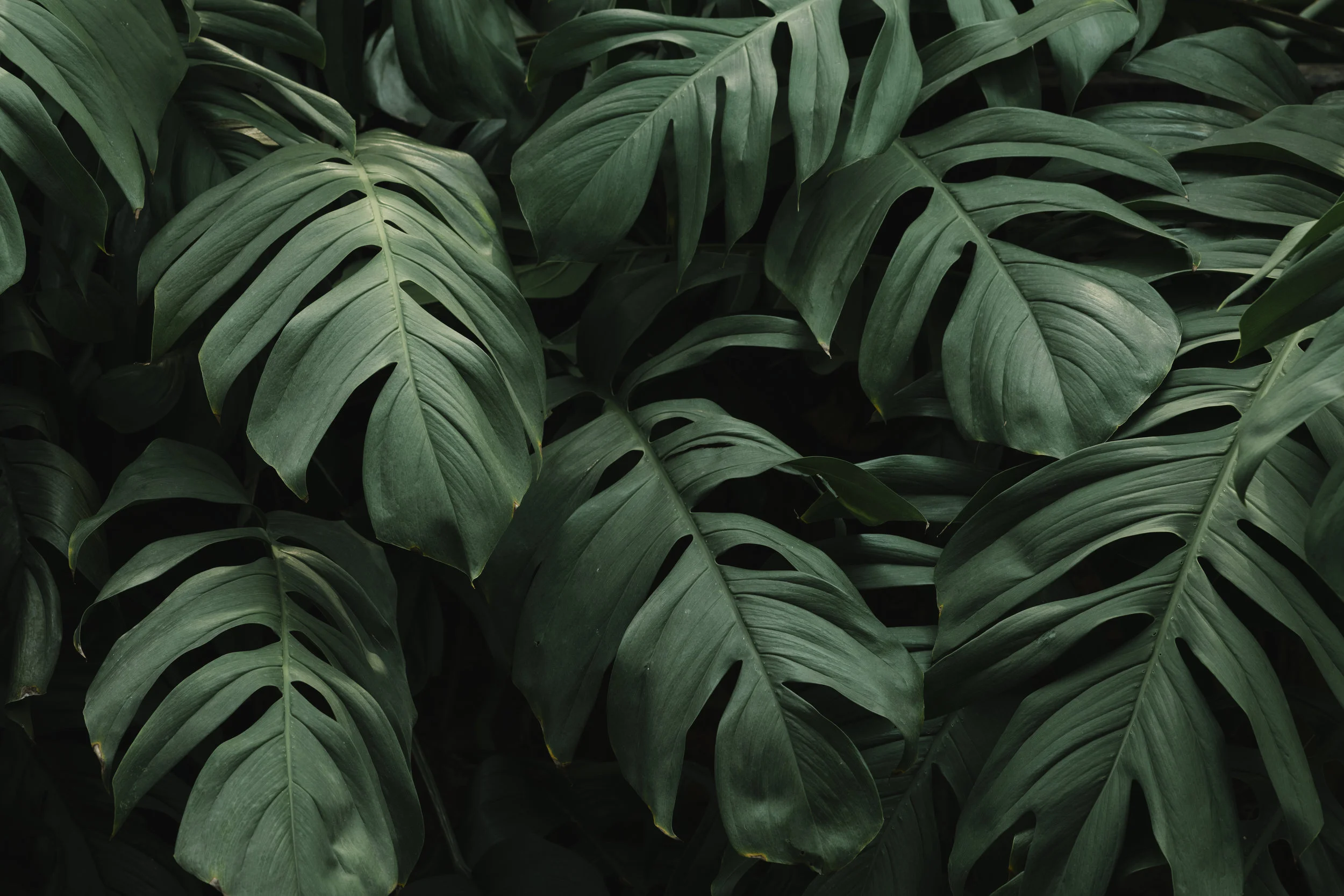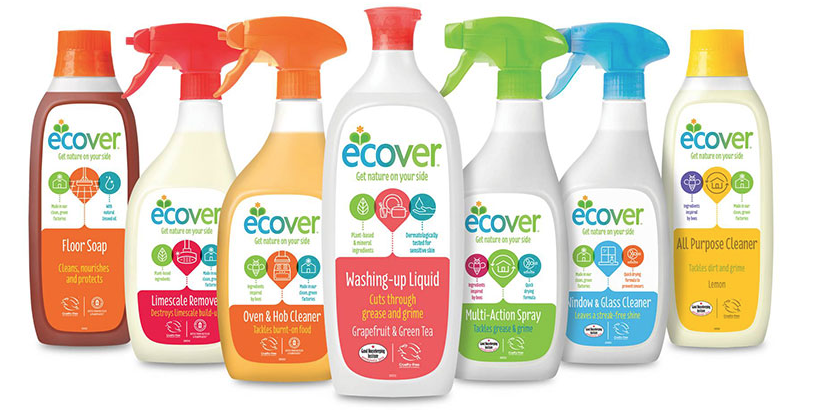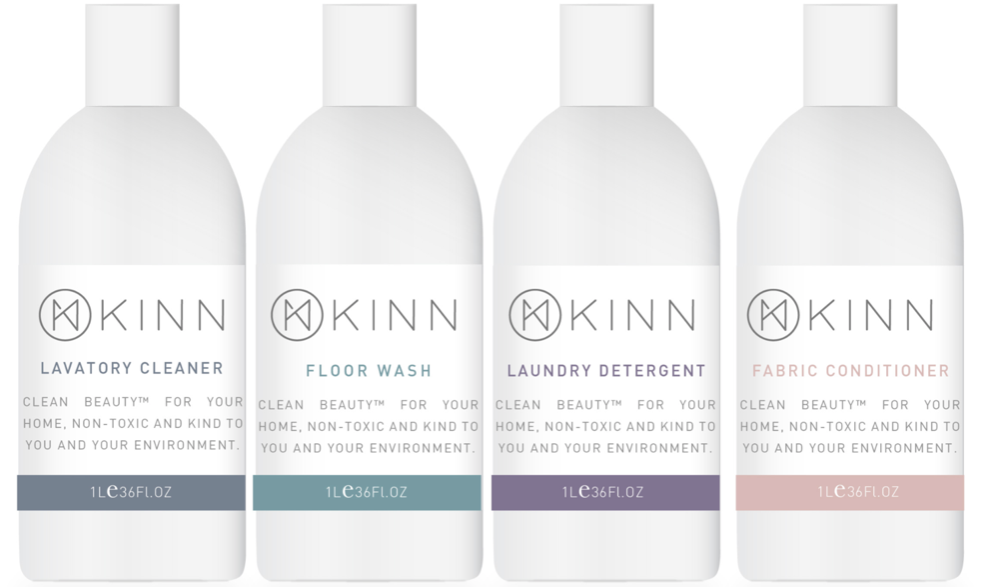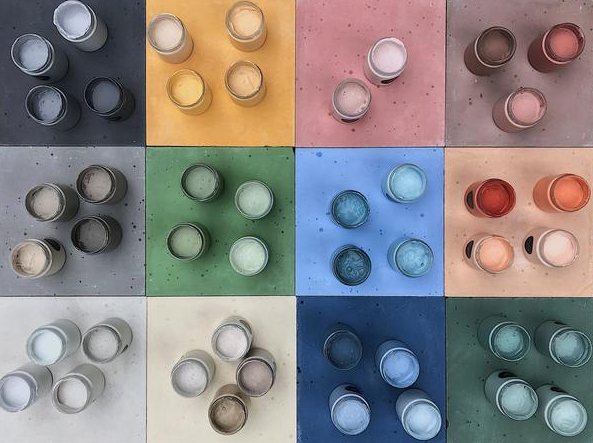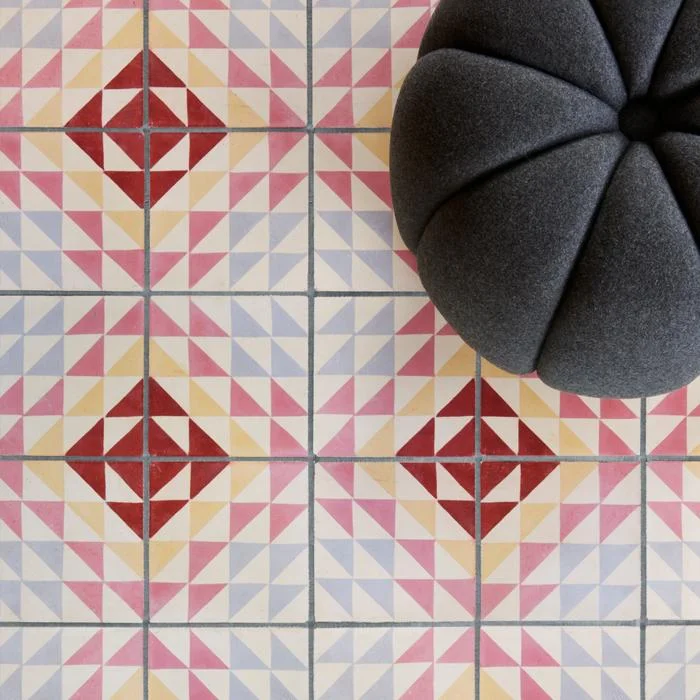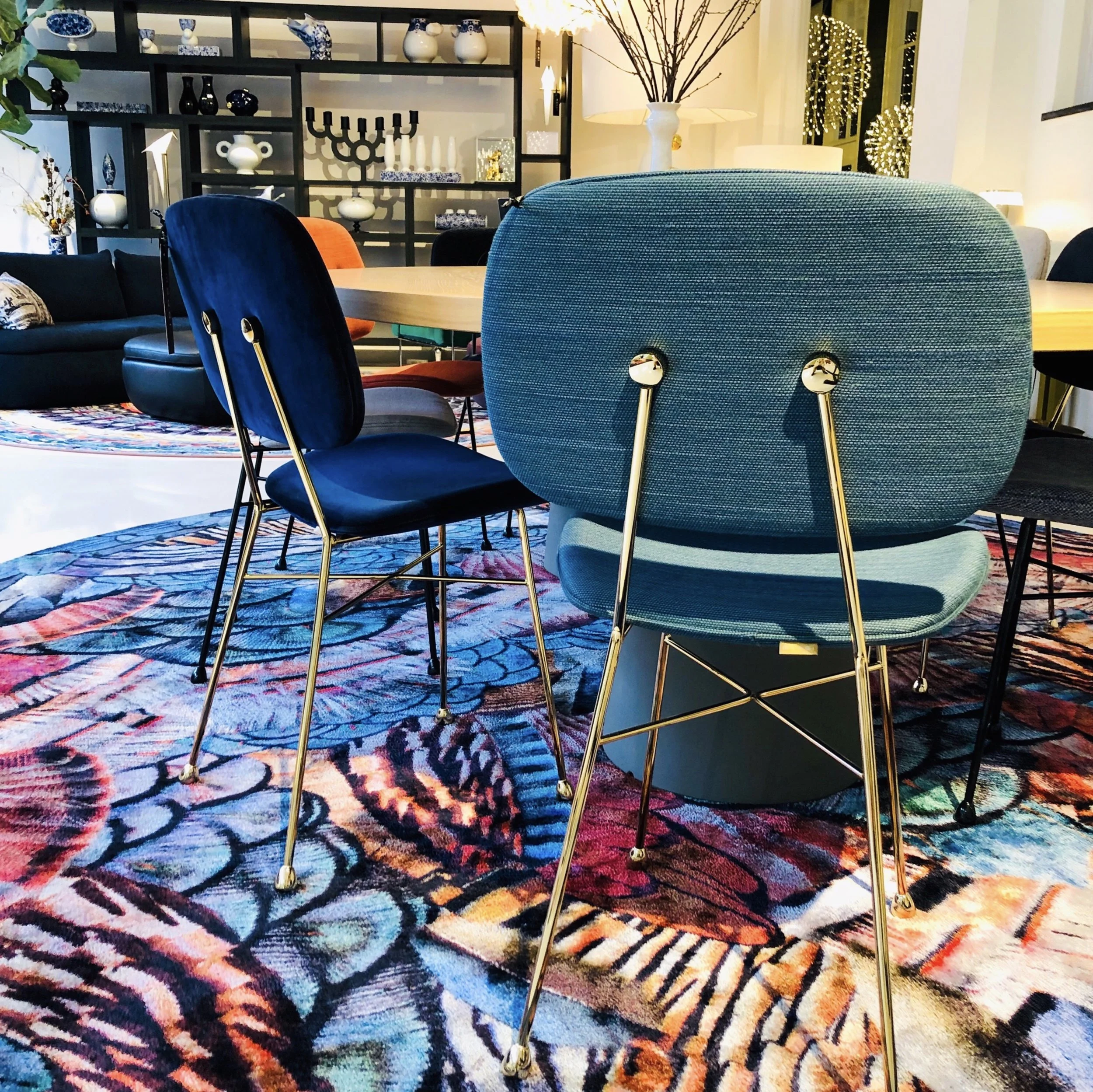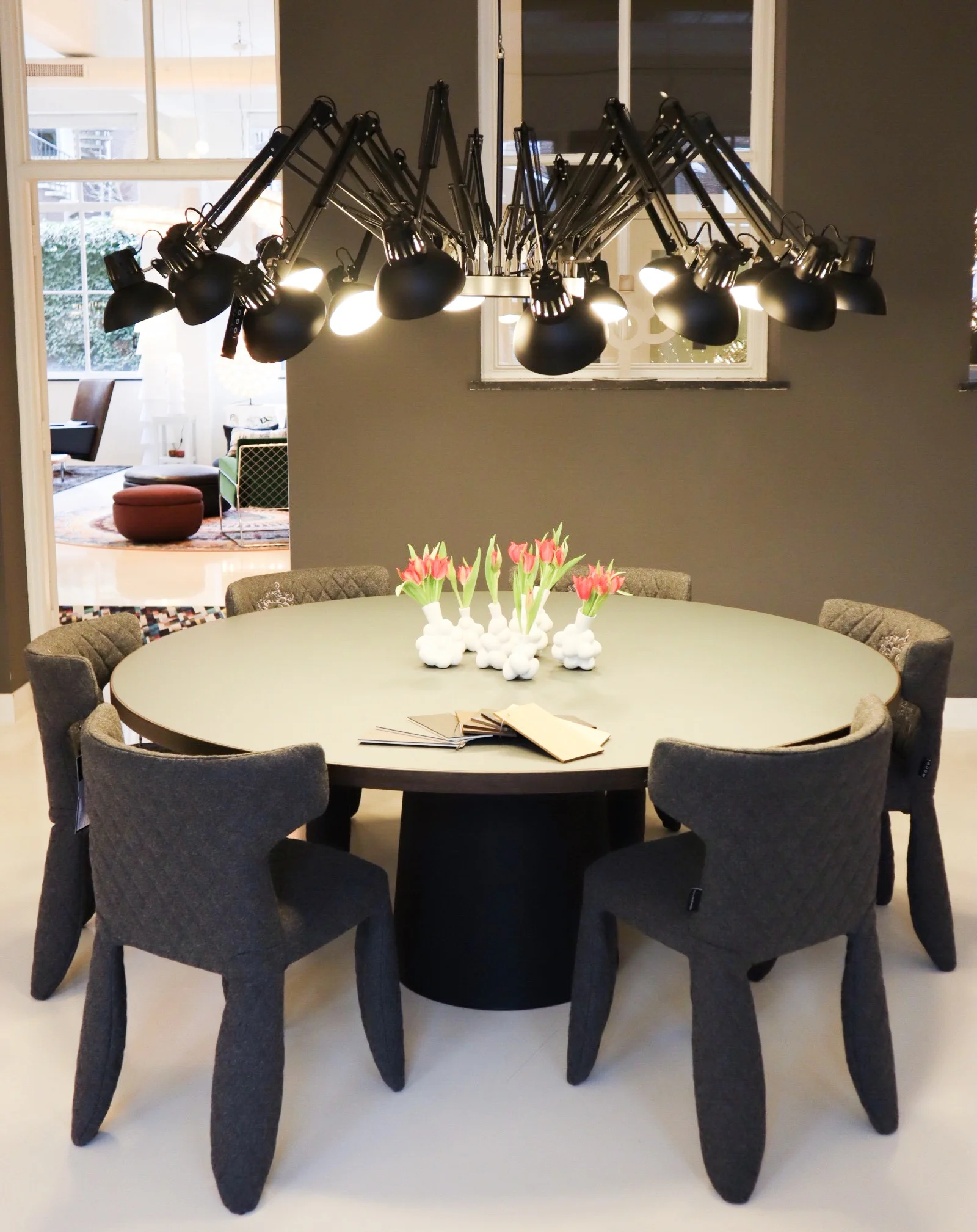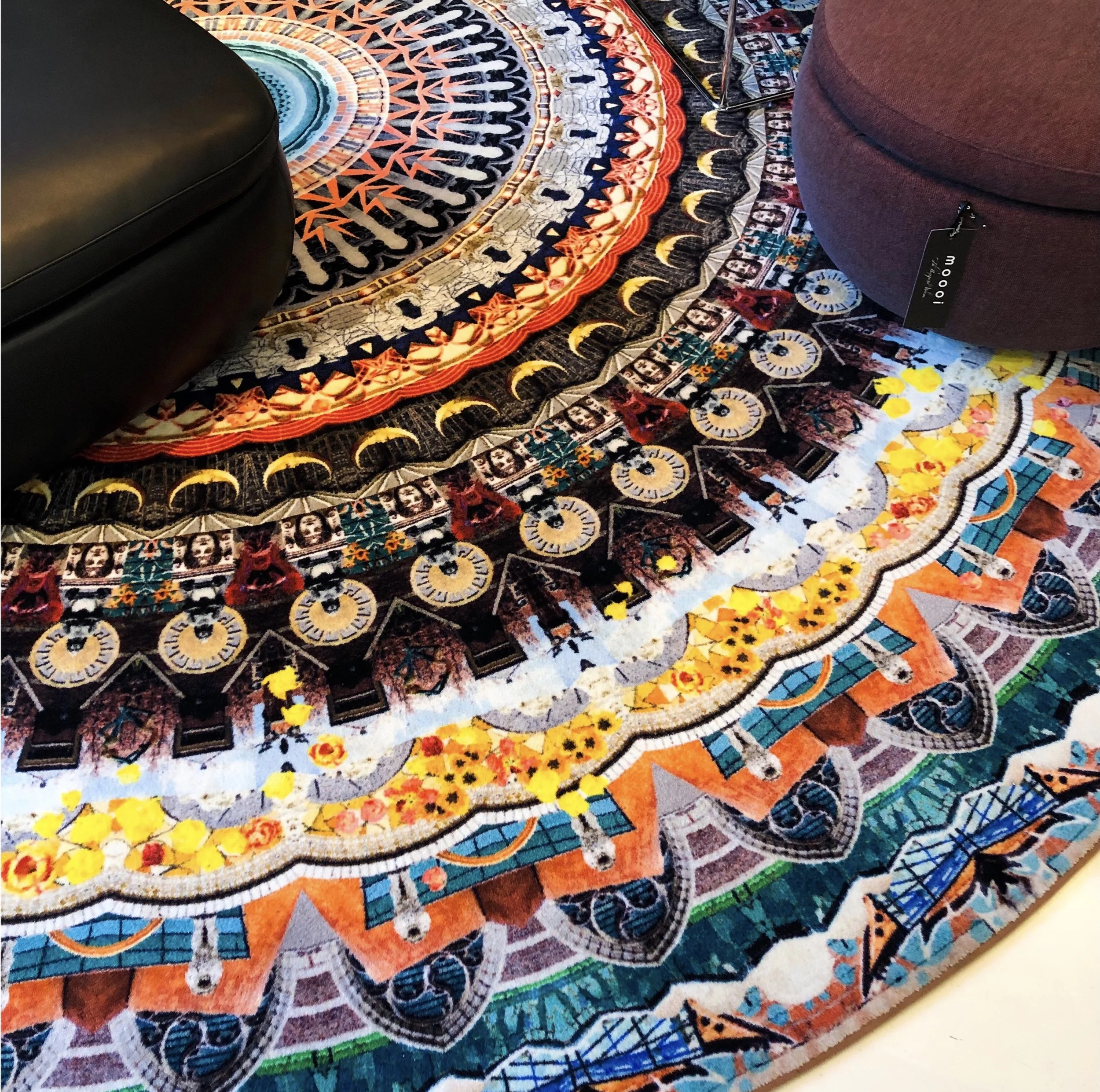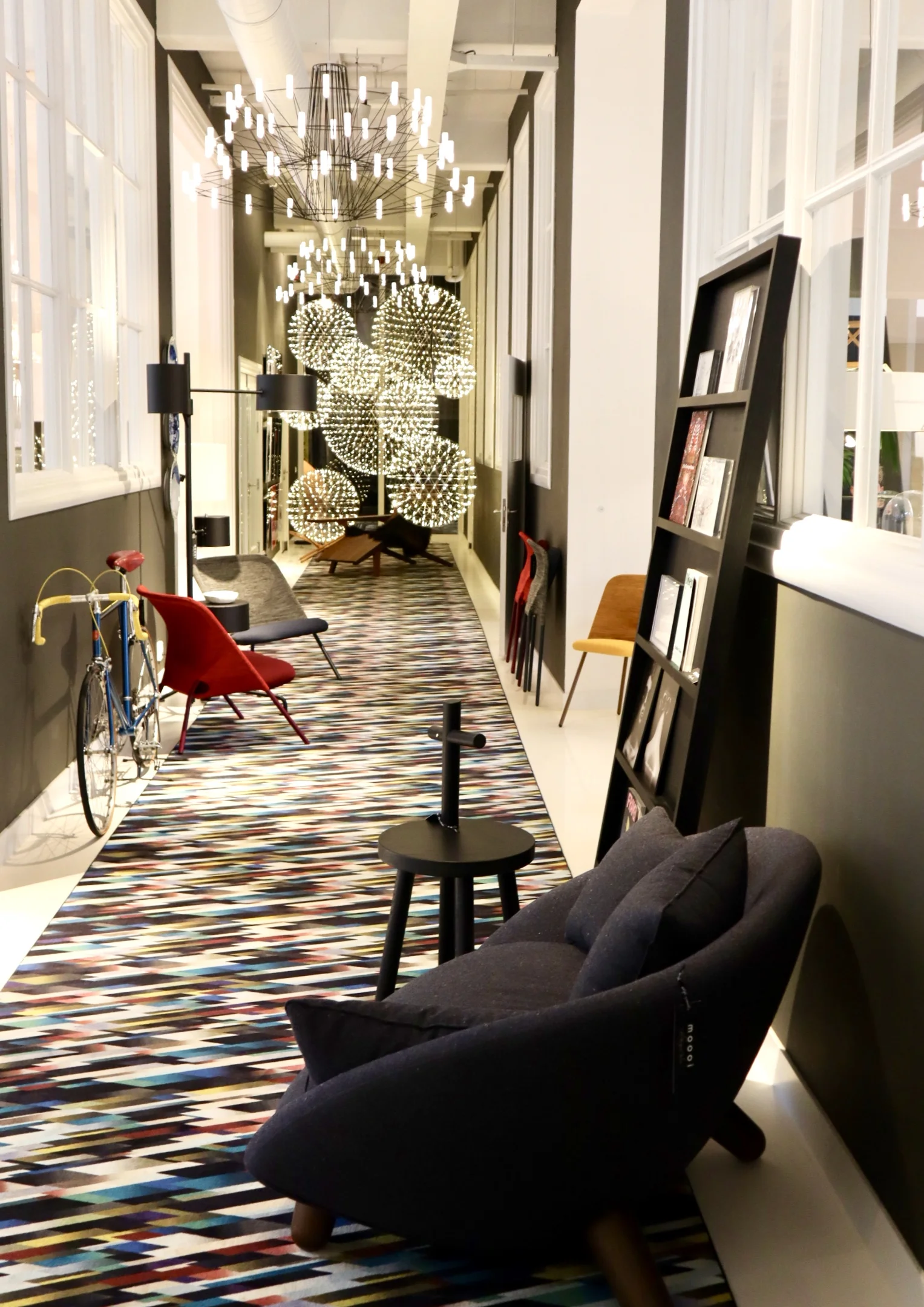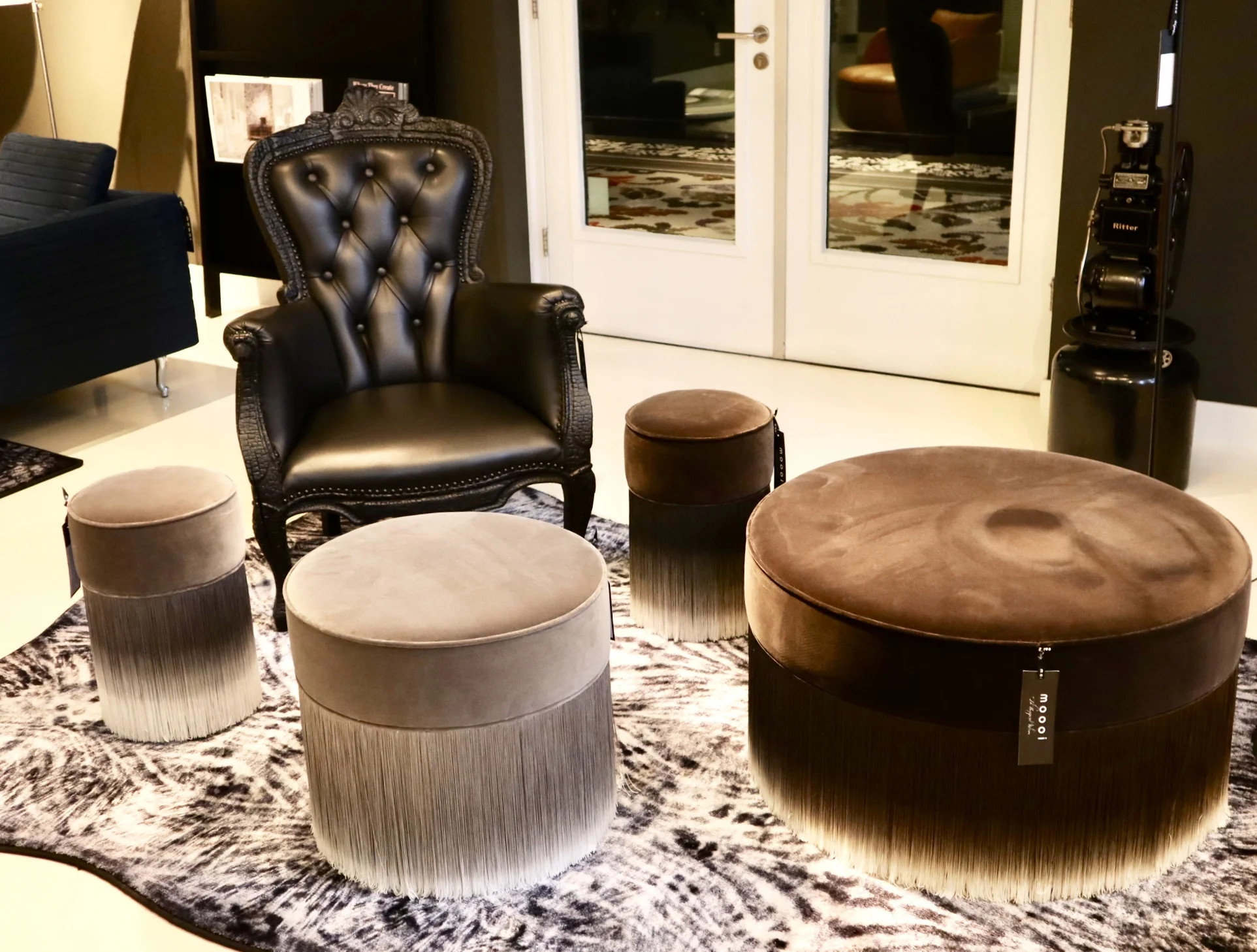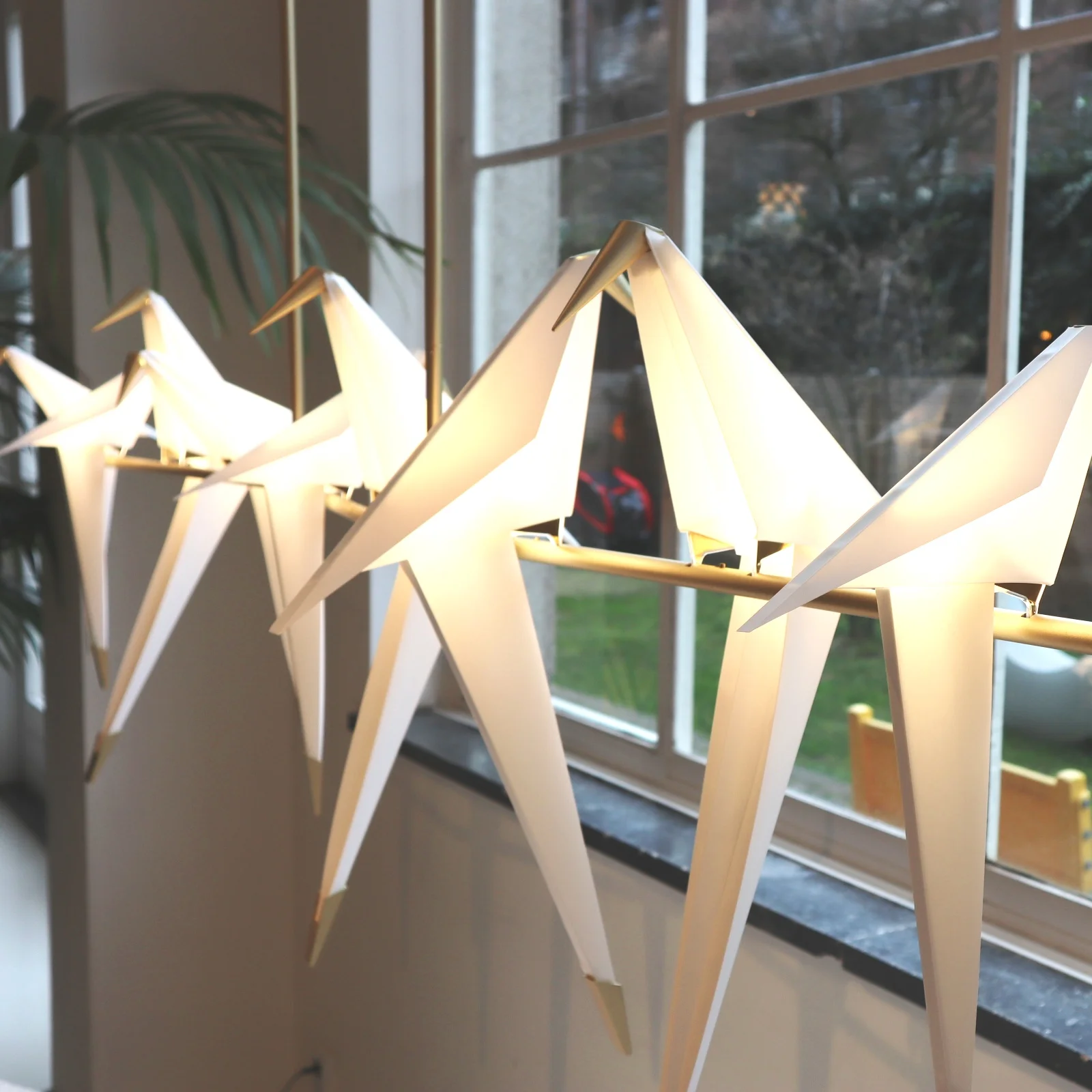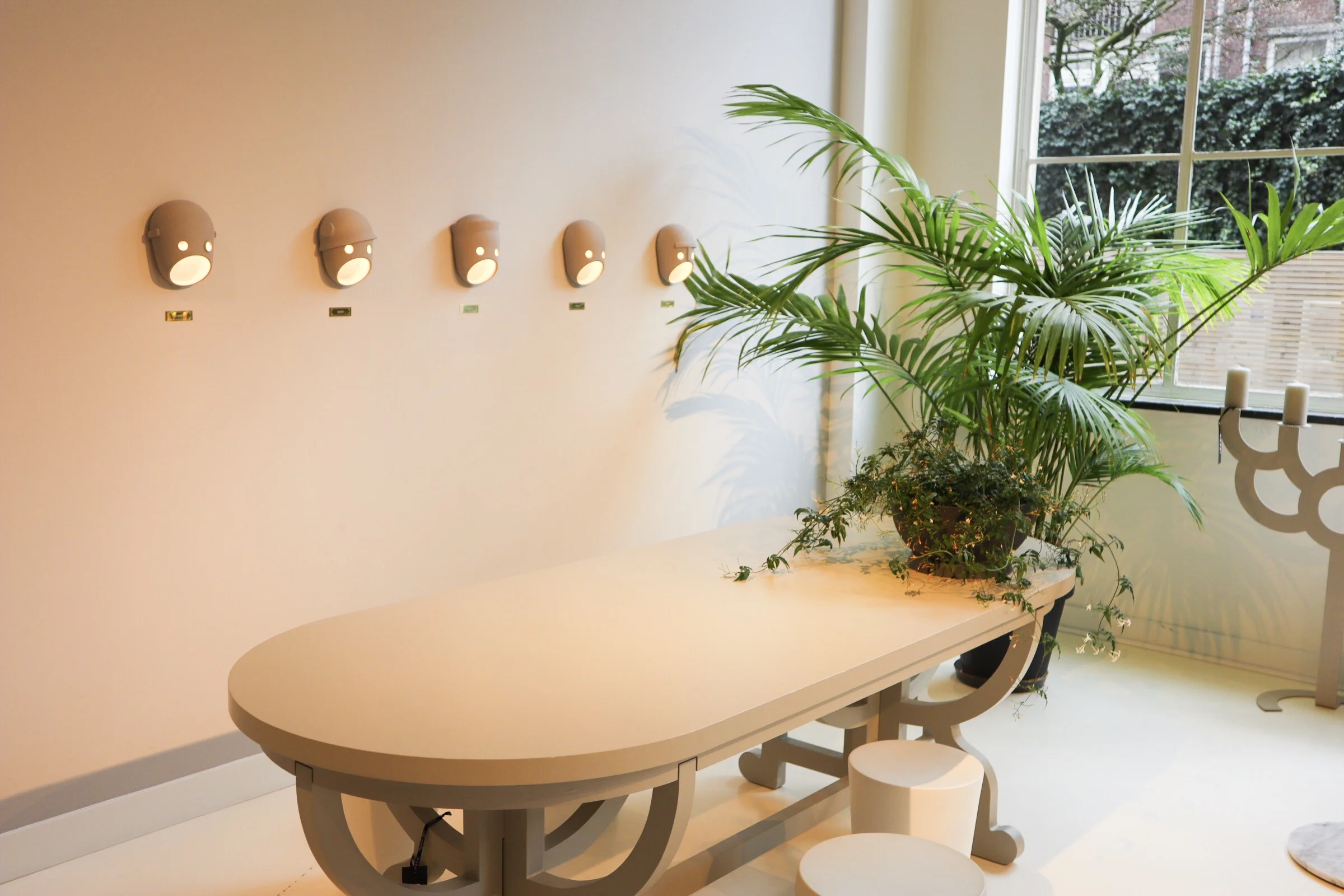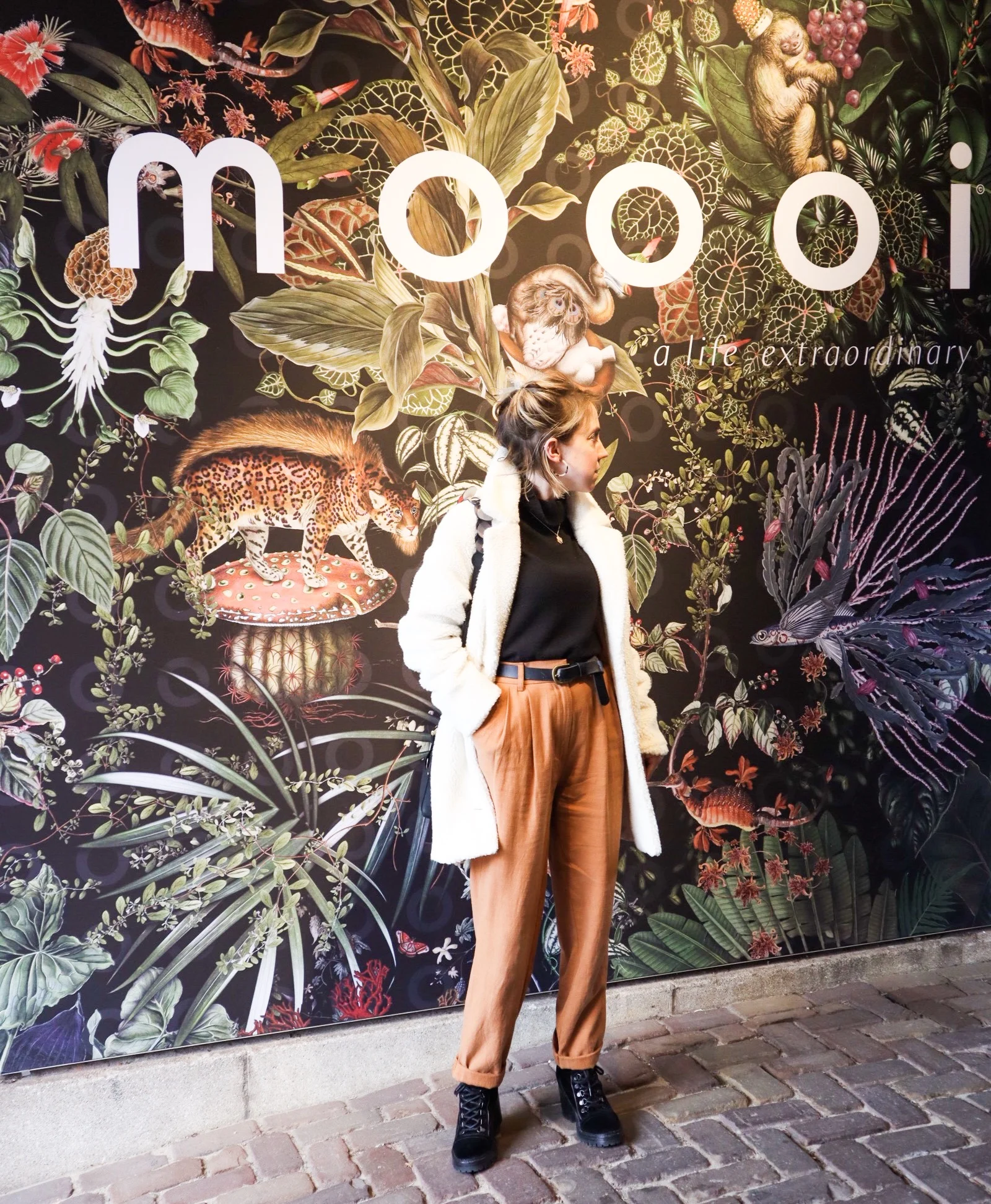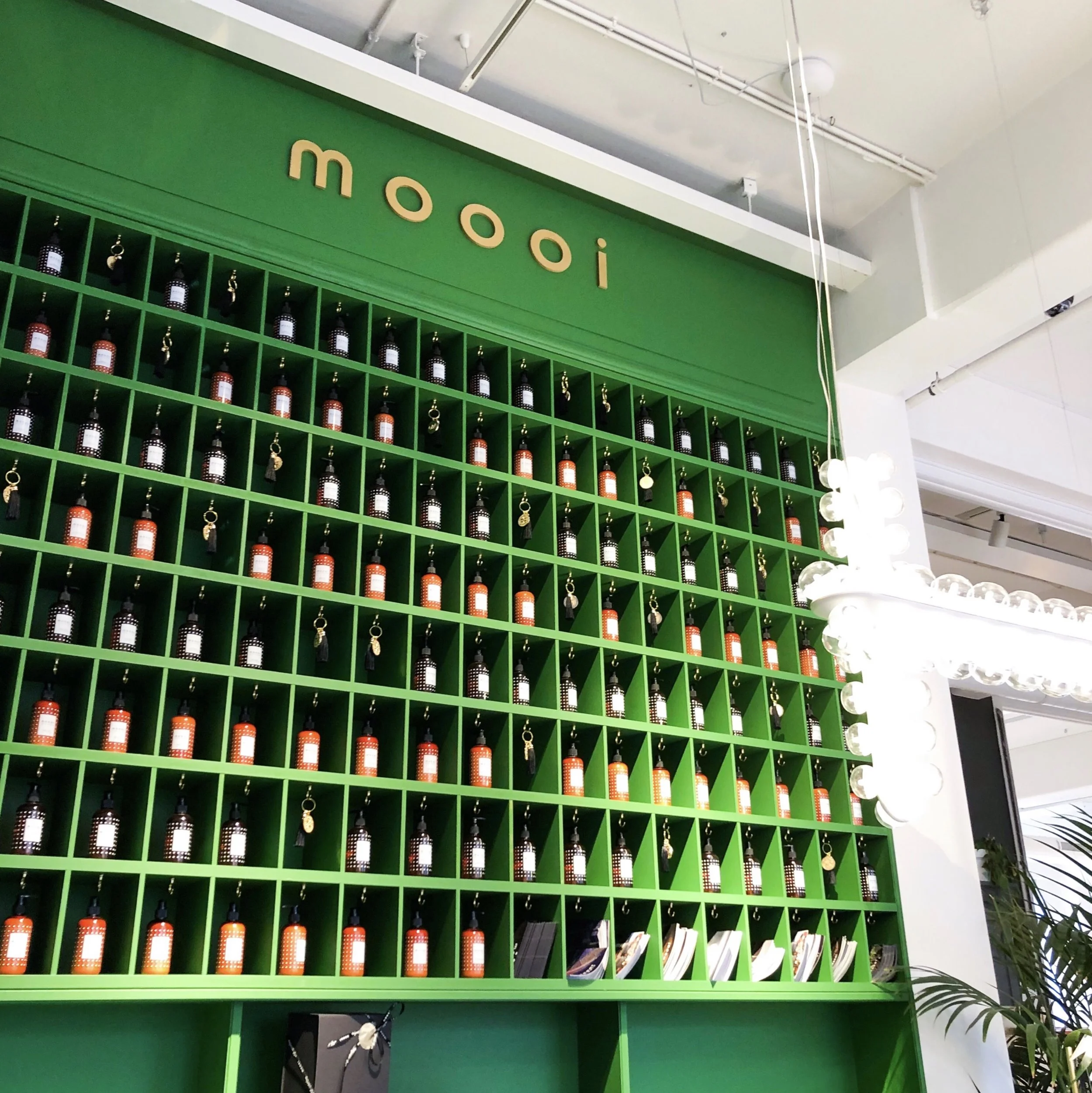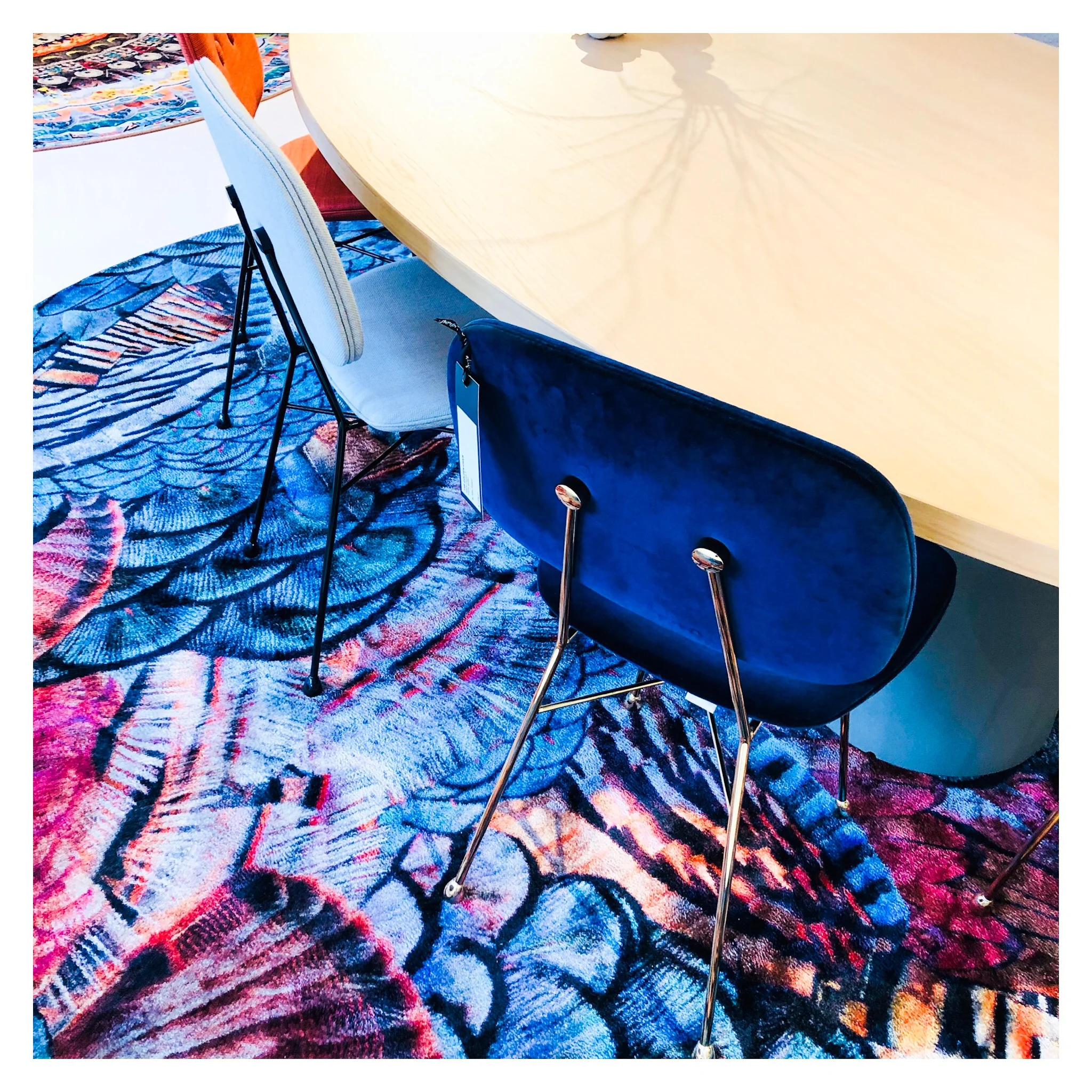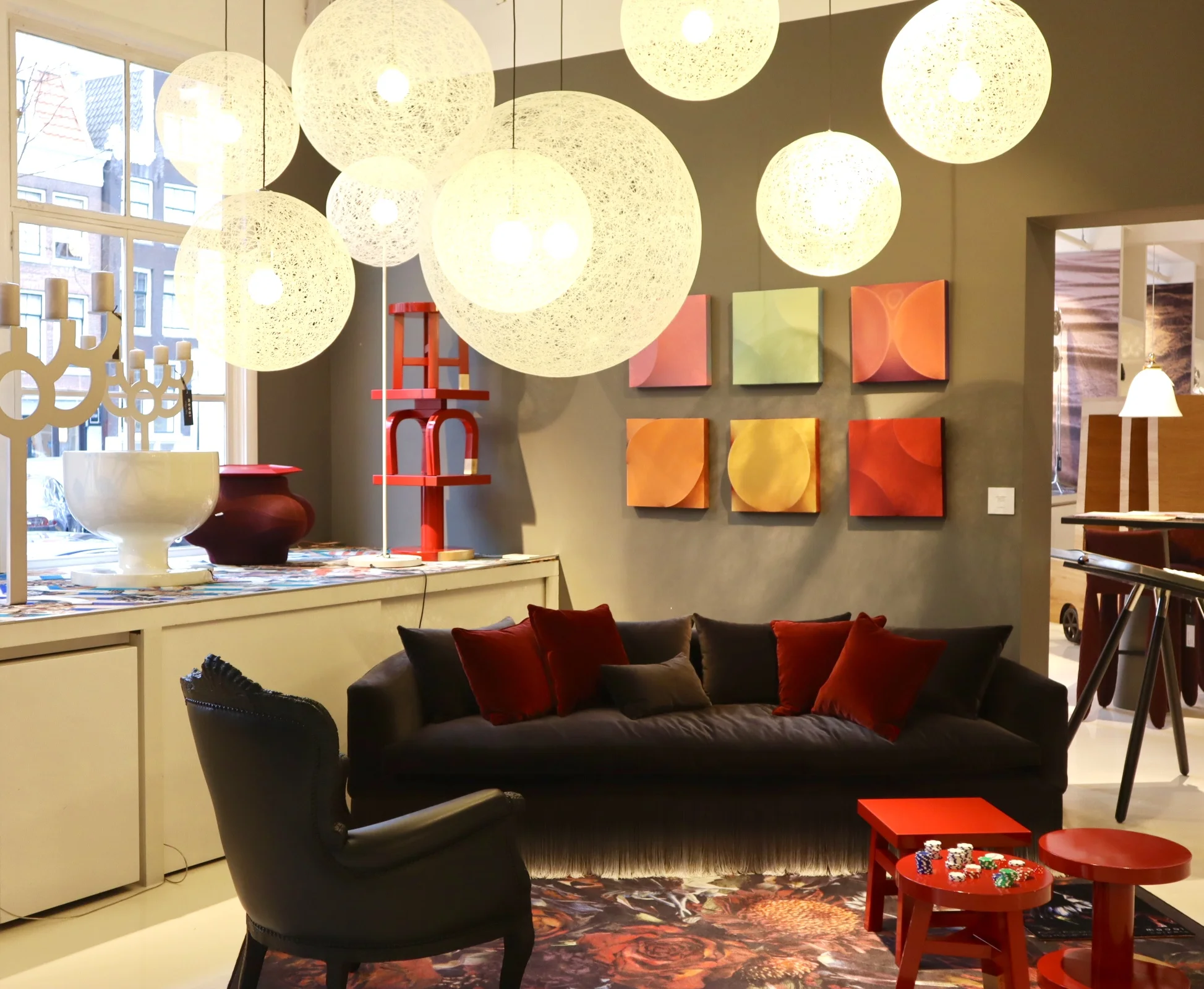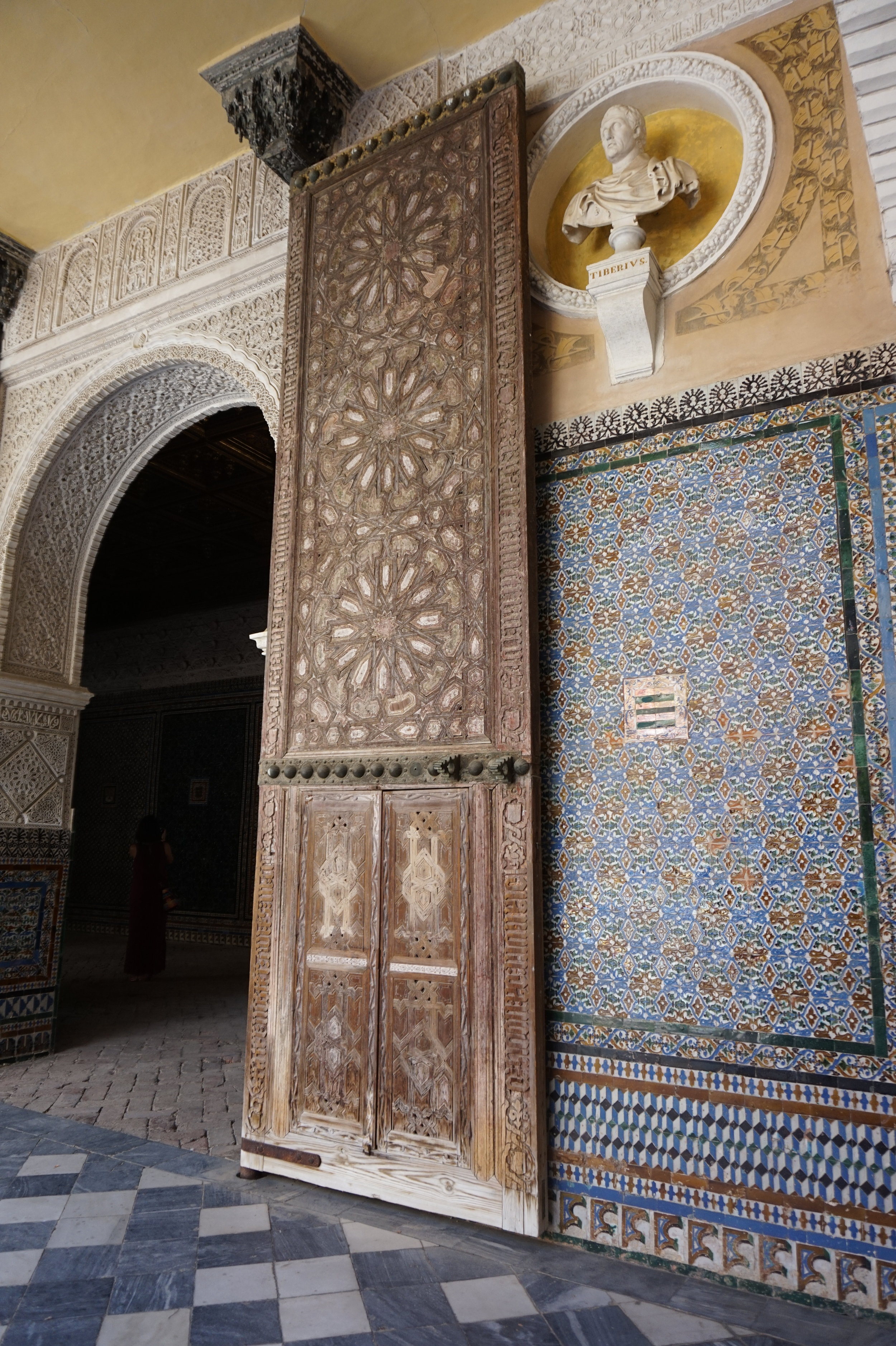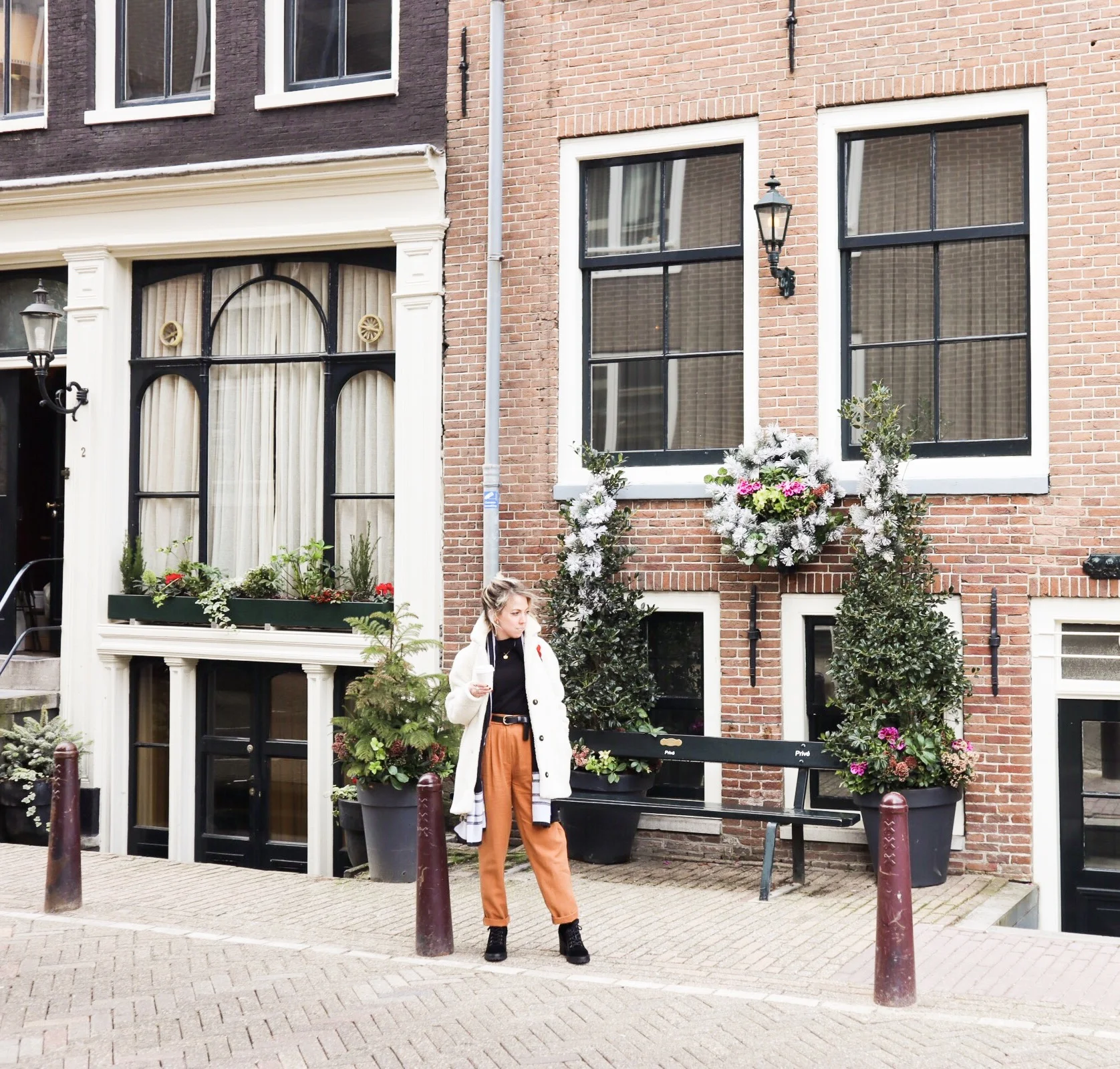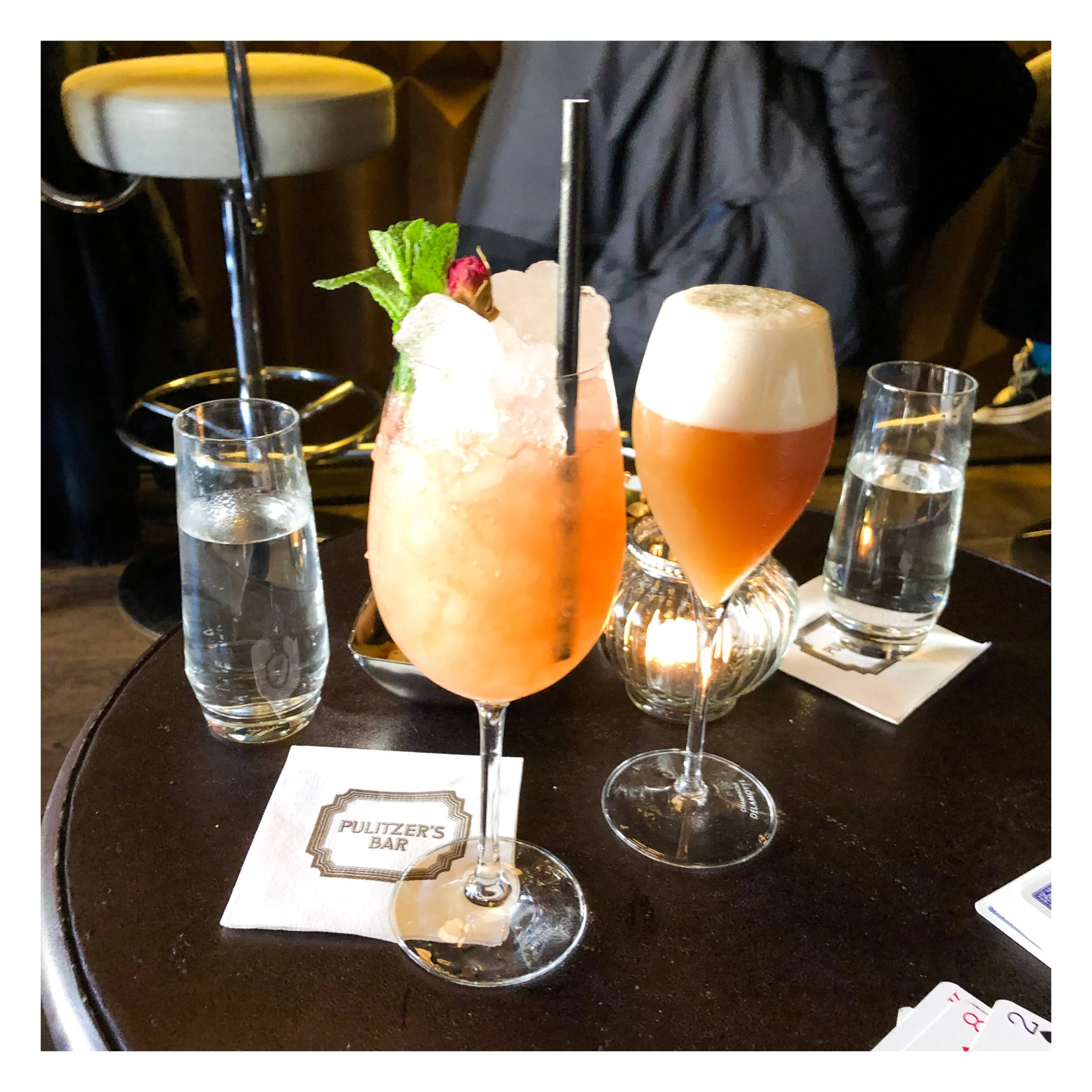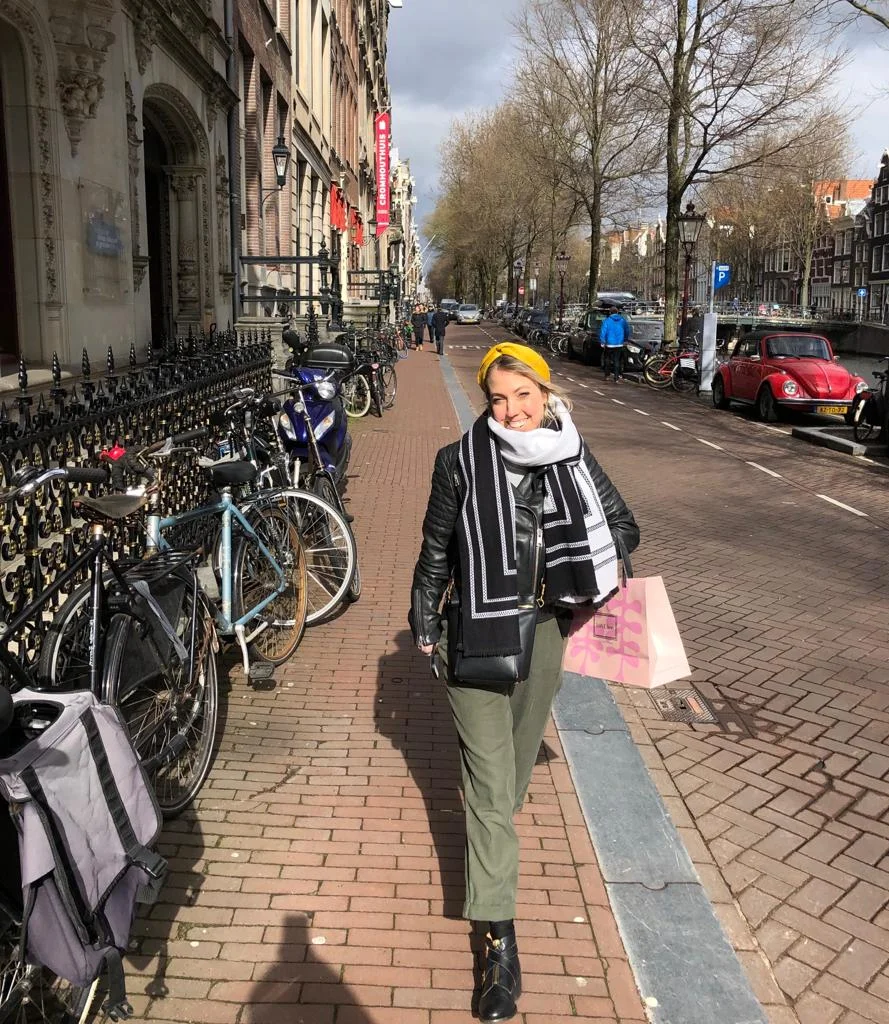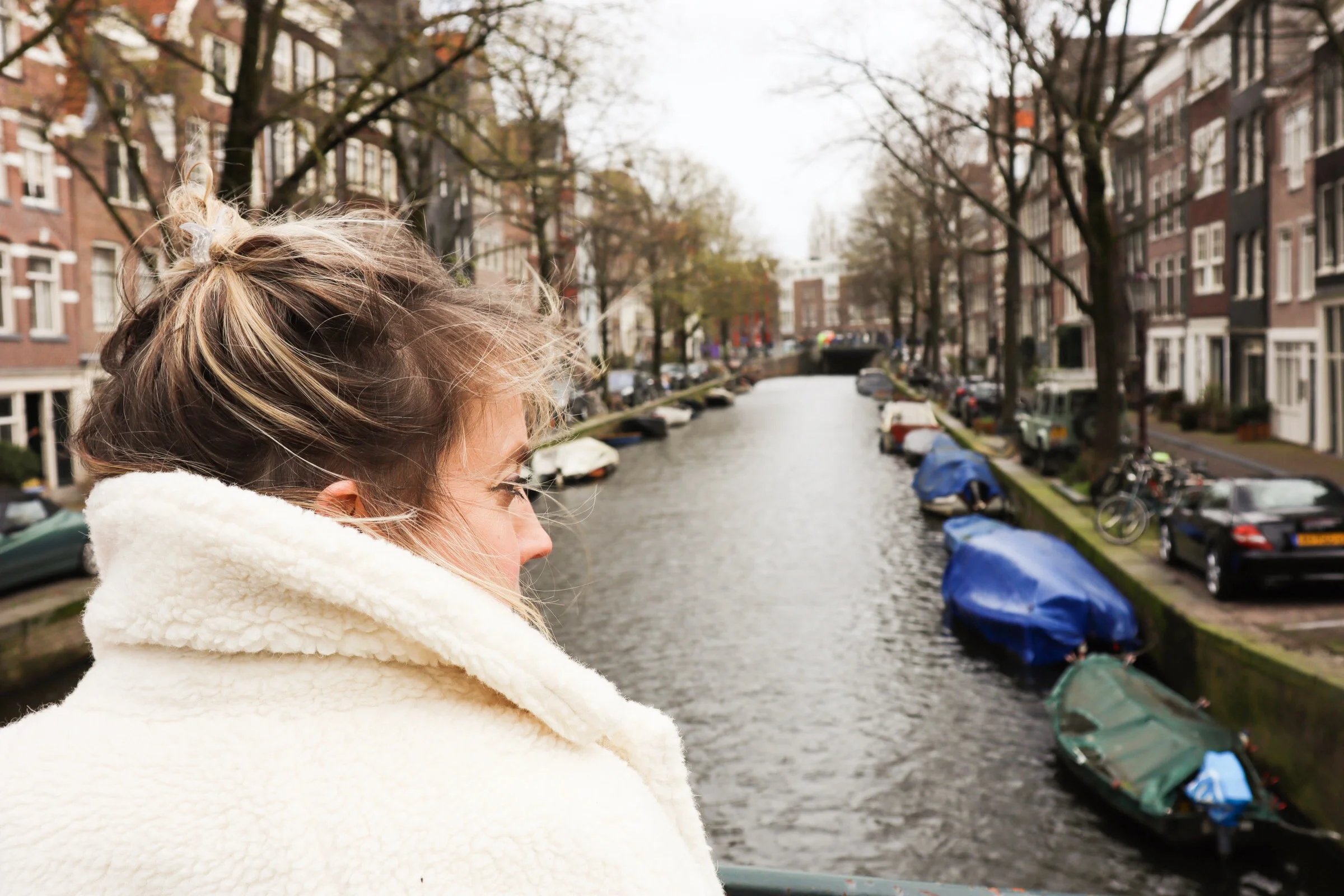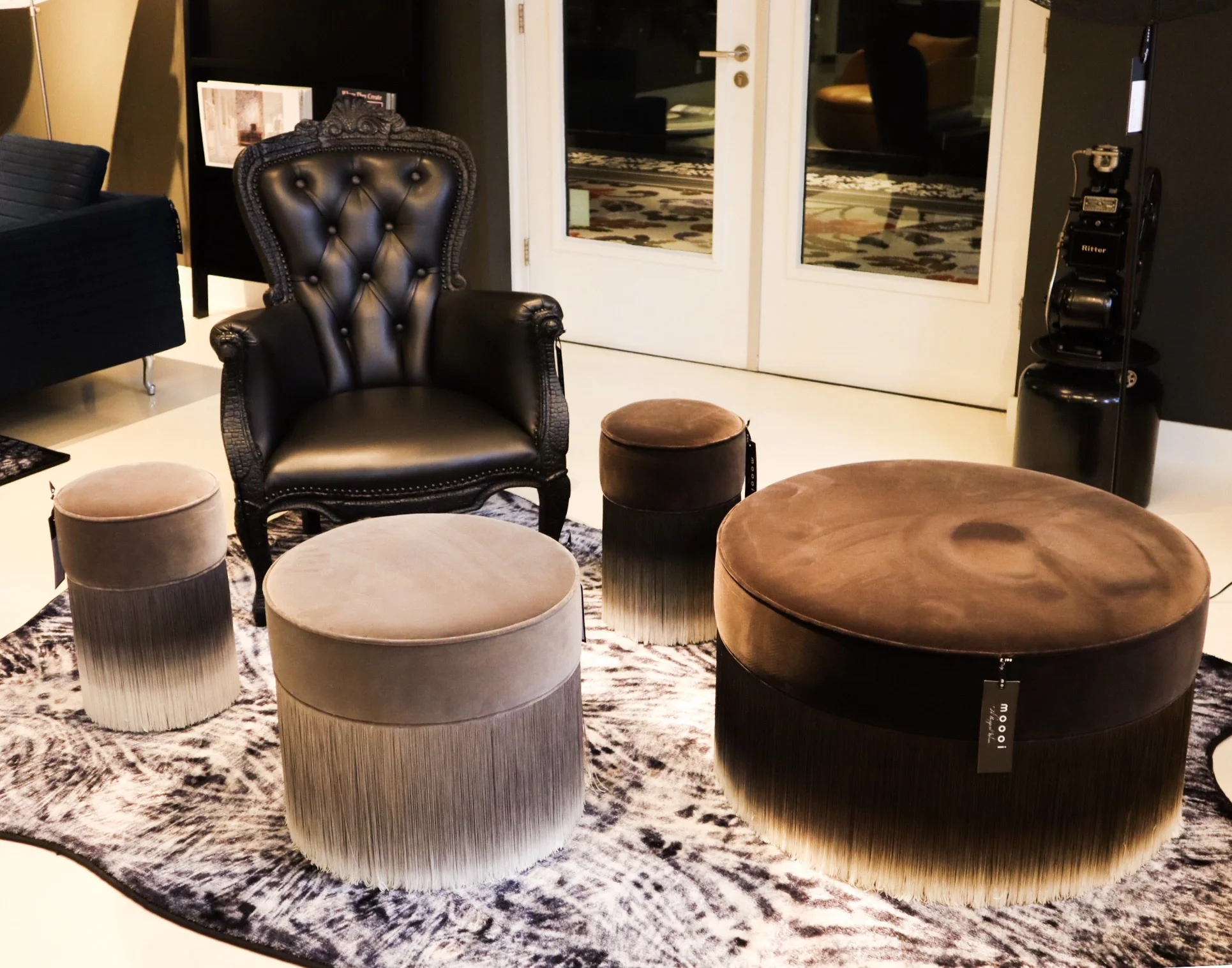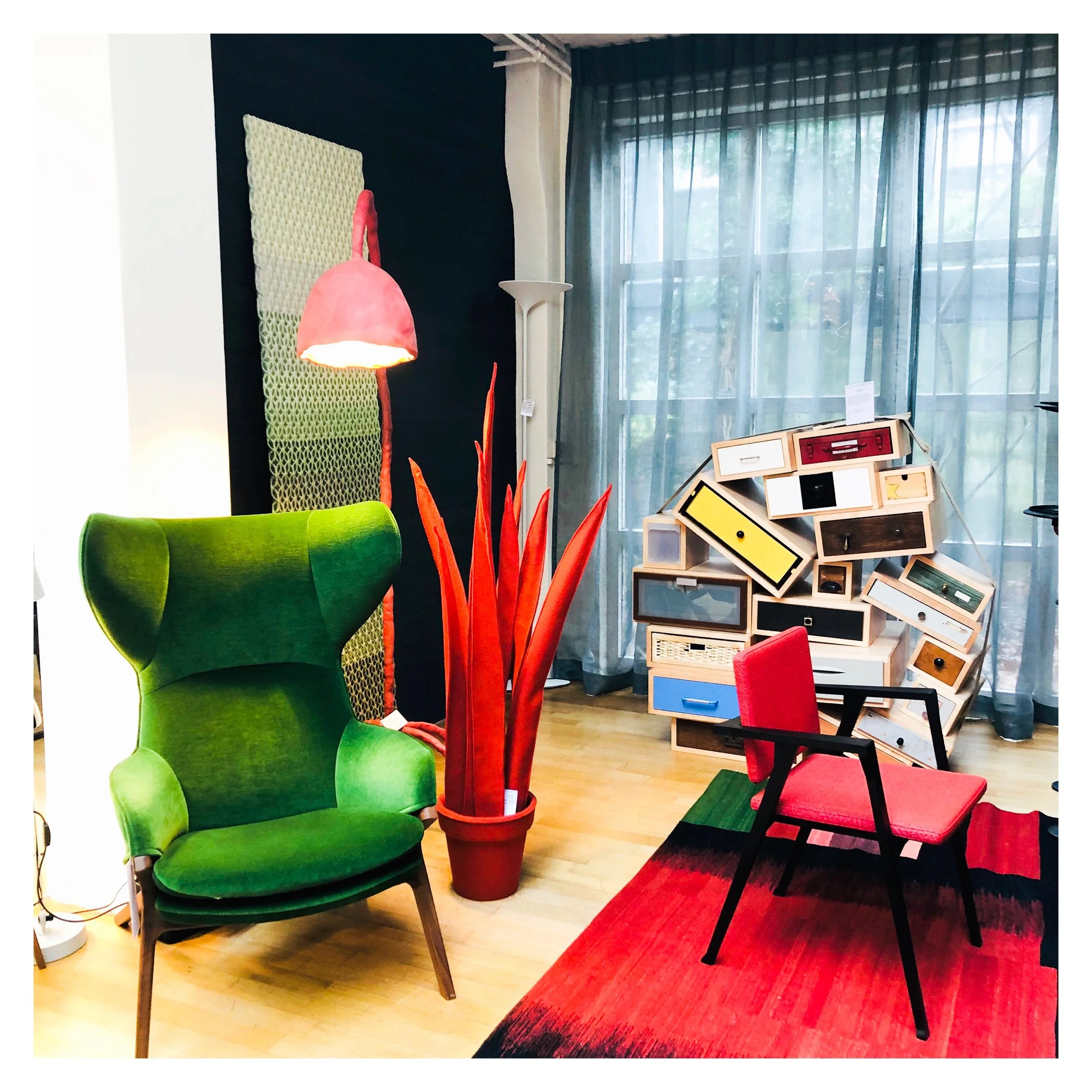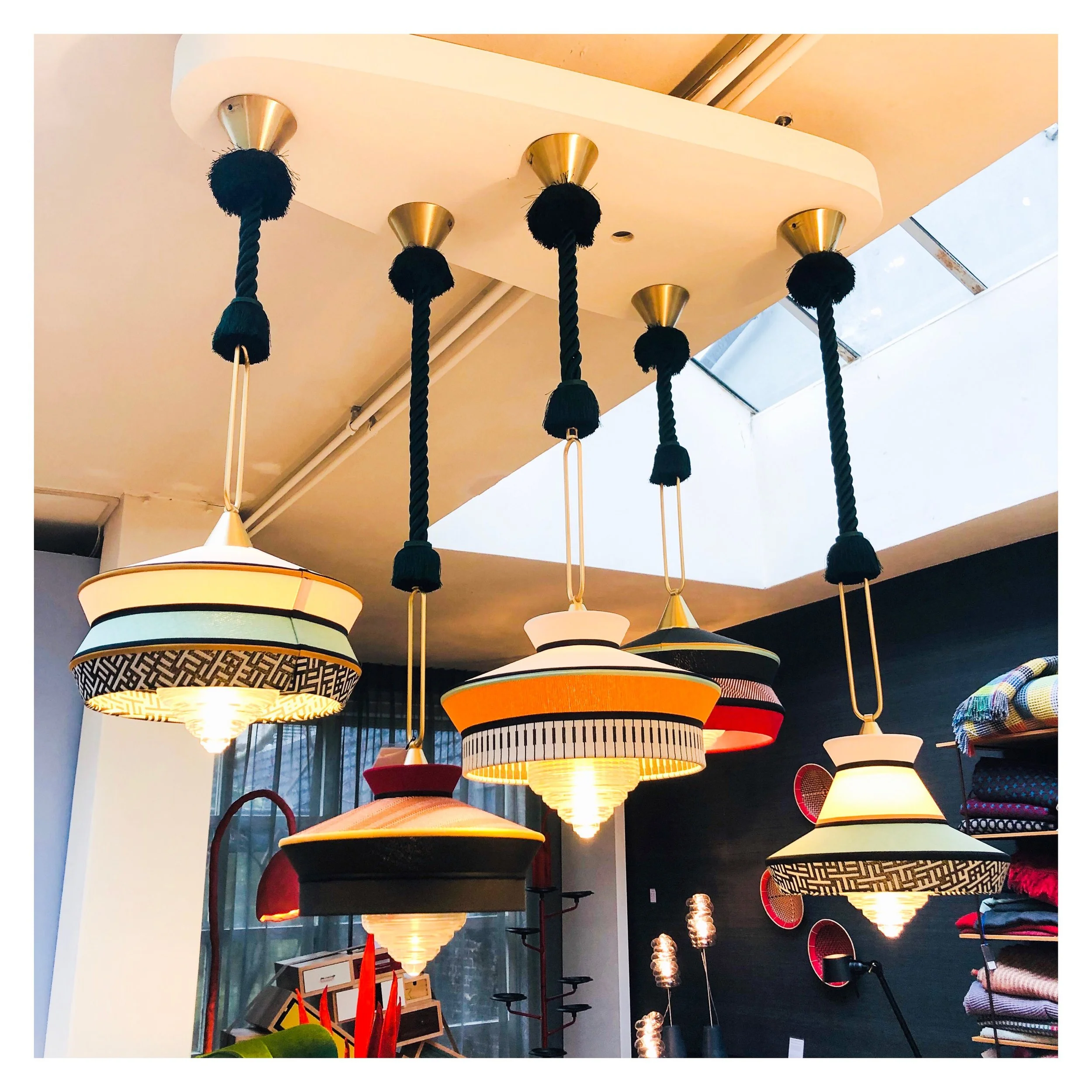Bring the outdoors in - Biophilic Design - A practice for wellbeing
Biophilic design, the practice of incorporating elements of nature into the built environment, has gained significant popularity in recent years. This innovative approach harmoniously blends the world of architecture and interior design with the power of nature, resulting in spaces that promote physical well-being, enhance productivity, and create a sense of tranquility.
Central to biophilic design is the understanding that humans have an innate connection to nature. As urbanization continues to rise and people spend more time indoors, this connection becomes increasingly crucial. By integrating elements like natural light, greenery, water features, and natural materials, designers can create spaces that not only look beautiful but also serve as sanctuaries for the human psyche.
One fundamental aspect of biophilic design is the utilization of natural light. Maximizing the use of daylight not only reduces energy consumption but also provides occupants with the ever-changing, dynamic qualities of natural lighting. Large, strategically placed windows, skylights, and lightwells allow for the penetration of sunlight deep into the interior, creating vibrant and uplifting spaces. This connection to the outdoors through light fosters a greater sense of connectedness to the surrounding environment.
Greenery plays a vital role in biophilic design, as it connects us with nature through the inclusion of plants, living walls, and even indoor gardens. Not only do plants purify the air, but they also provide visual stimulation and a calming effect. The presence of greenery has been proven to reduce stress levels, boost creativity, and enhance overall cognitive function. Incorporating plant life into interior spaces ensures a sense of freshness and vitality, bringing a touch of nature's serenity indoors.
Water features are another key element of biophilic design. The soothing sound and visual presence of water create a calming atmosphere that helps to reduce anxiety and promote relaxation. The incorporation of elements such as indoor waterfalls, fountains, or ponds can transform any space into a peaceful retreat. Water acts as a natural separator, providing privacy while simultaneously connecting different areas, enhancing the overall flow and harmony of the space.
Using natural materials is essential in biophilic design as they evoke a connection to the earth. Wood, stone, clay, and other organic materials bring a sense of warmth and authenticity to interior spaces. Not only are they aesthetically pleasing, but they also contribute to the overall well-being of occupants by improving indoor air quality, sense of self and calm that only nature can instil.
Transformative Power of Colour
Colour has an incredible ability to uplift, inspire, and transform the atmosphere of a space. From the soothing hues of blue to the vibrancy of red, the careful selection and application of colour can have a profound impact on the overall aesthetic and mood of an interior. Whether it's a residential abode, a commercial space, or even a public area, the transformative power of colour can create a truly immersive and captivating experience.
Colour has an incredible ability to uplift, inspire, and transform the atmosphere of a space. From the soothing hues of blue to the vibrancy of red, the careful selection and application of colour can have a profound impact on the overall aesthetic and mood of an interior. Whether it's a residential abode, a commercial space, or even a public area, the transformative power of colour can create a truly immersive and captivating experience.
One of the most noticeable effects of colour in interiors is its ability to influence emotions. Certain colours can evoke a sense of calm and tranquility, while others can ignite passion and energy. For instance, a light and airy room painted in soothing pastel tones can instantly create a serene and peaceful sanctuary. On the other hand, a vibrant red accent wall in a dining area can stimulate appetite and create a lively and stimulating atmosphere. Colour has the power to communicate messages and evoke specific emotional responses, allowing designers to curate desired experiences for those who occupy the space.
Furthermore, the strategic use of colour can also enhance the perceived size and functionality of a room. Lighter colours tend to make a space feel more spacious and open, while darker shades can create a sense of intimacy and coziness. In small rooms, the use of pale hues on walls and furniture can visually expand the boundaries and make the area feel more expansive. Contrarily, in larger spaces, the clever application of darker colours on select walls or features can create a sense of depth and comfort. By understanding the principles of colour psychology and spatial perception, designers can manipulate the visual aspects of a room, transforming its dimensions to suit intended purposes.
Additionally, colour has the power to showcase individuality and personal style. A well-chosen and thoughtfully executed colour palette can be a reflection of the occupant's taste and personality, making a space feel truly unique and customized. Whether it's a bold and dramatic combination or a harmonious blend of complementary shades, the right use of colour can impart a distinct character and make a space feel authentic and welcoming. By carefully considering the desires and preferences of the client, designers can select colours that resonate with their personality and create an environment that truly feels like home.
Essentially, the transformative power of colour in interiors is undeniable. From influencing emotions to altering perceptions and showcasing individuality, colour plays a pivotal role in crafting a memorable and impactful interior design. By harnessing the communicative and sensory properties of colour, designers can create truly effective and beautiful design that does good.
The Holistic Approach to Interior Design - Creating Meaningful Spaces
In today's fast-paced world, our homes have become more than just shelters; they are sanctuaries where we seek solace, peace, and rejuvenation. As we become increasingly aware of the impact our surroundings have on our well-being, a holistic approach to interior design is gaining momentum.
Creating Meaningful Spaces
In today's fast-paced world, our homes have become more than just shelters; they are sanctuaries where we seek solace, peace, and rejuvenation. As we become increasingly aware of the impact our surroundings have on our well-being, a holistic approach to interior design is gaining momentum.
At LitterArty, we firmly believe in taking this holistic approach to interior design. Rather than simply focusing on aesthetics, we consider the overall well-being of our clients and the impact their surroundings have on their mental, physical, and emotional health. Our approach involves seamlessly integrating elements of nature, natural materials, and sustainable design practices into our interiors. We create spaces that promote tranquility and harmony, utilizing natural lighting, indoor plants, and calming color palettes to foster a sense of calm and connection to the environment.
By carefully selecting furniture and decor that align with our clients' values and lifestyle, we ensure that their space is not only visually appealing, but also functional, comfortable, and imbued with a sense of integrity. Our holistic approach to interior design aims to create spaces that nourish the mind, body, and soul, promoting a sense of balance and well-being for our clients.
One of the key pillars of a holistic approach to interior design is having the understanding that our homes should reflect and support our individuality and lifestyle. Moving away from text book designs and embracing customisation. By carefully considering our clients' desires, needs, and aspirations, we can create spaces that are uniquely tailored to their personalities and promote self-expression. When we surround ourselves with design elements that resonate with our values and evoke positive emotions, we foster a deep sense of belonging and fulfilment. This is perhaps the most basic step in designing holistically and with wellbeing in mind.
Furthermore, a holistic approach to interior design acknowledges the importance of sustainability and eco-consciousness. Our planet faces numerous environmental challenges, and it is our responsibility to minimize our ecological footprint. By selecting sustainable materials, opting for energy-efficient lighting and appliances, and incorporating renewable energy sources, we can create spaces that are not only aesthetically pleasing but also environmentally responsible. This commitment to sustainability not only benefits our planet but also promotes a healthier indoor environment for occupants, something we are very passionate about promoting.
Health and well-being are indispensable components of a holistic approach to interior design. By embracing evidence-based design principles, we can create spaces that promote physical and mental well-being. Incorporating ample natural light, optimizing ventilation, and carefully selecting materials that minimize toxins contribute to a healthier indoor environment. Additionally, creating layouts that encourage movement and incorporate ergonomic furniture foster physical wellness. Considering these aspects in our designs ensures that our interiors become spaces that truly support and enhance the well-being of occupants.
The holistic approach to interior design also recognizes the profound impact that our surroundings have on our emotional and mental states. By mindful space planning and thoughtful use of colour and texture, we can create interiors that evoke positive emotions, inspire creativity, and promote emotional well-being. Incorporating elements from nature, such as plants and natural materials, can have a soothing effect on our minds, reducing stress and enhancing focus. By considering the sensory experience of a space, we can create environments that offer holistic stimulation.
Lastly, a holistic approach to interior design acknowledges the deeper spiritual aspect of human existence. It recognises the significance of personal objects, symbols, and rituals that hold meaning for individuals. By honouring the spiritual dimension, a space becomes not only visually appealing but fit for purpose.
The Rise of the Home Office
In recent years, the home office has experienced an unprecedented rise in popularity. Driven by advancements in technology and changes in work culture, more and more individuals are transitioning from traditional office spaces to the comfort and convenience of their own homes. With this shift, interior design professionals have been challenged to create functional and aesthetically pleasing workspaces within the confines of residential properties.
In recent years, the home office has experienced an unprecedented rise in popularity. Driven by advancements in technology and changes in work culture, more and more individuals are transitioning from traditional office spaces to the comfort and convenience of their own homes. With this shift, interior design professionals have been challenged to create functional and aesthetically pleasing workspaces within the confines of residential properties.
One of the key factors fueling the rise of the home office is the increasing availability of remote work opportunities. As companies recognise the benefits of a flexible work environment and the positive impact it can have on productivity and work-life balance, the concept of the traditional office is evolving. No longer confined to a physical location, employees now have the freedom to work from anywhere, and many are choosing to work from the comfort of their own homes.
The transformation of the home office has also been driven by advancements in technology. High-speed internet connections, sophisticated digital tools, and video platforms have made it easier than ever to communicate and collaborate remotely. This accessibility has made the need for a dedicated workspace within the home even more essential. Which is why designing a functional home office that caters to the specific needs of remote work has become a priority for many homeowners.
When creating a home office, it is crucial to strike a balance between functionality, comfort, and style. Ergonomics plays a vital role as individuals spend long hours seated at their desks. Adjustable chairs, standing desks, and proper lighting are essential elements that contribute to a healthy and productive work environment. Incorporating natural light into the design can uplift the mood and create a calming atmosphere, reducing stress and enhancing creativity.
To maximise productivity and minimise distractions, it is important for a home office to be a separate and dedicated space within the house, where possible and where not possible this can be achieved through thoughtful interior design choices such as using room dividers or transforming an underutilaized room into a productivity hub. By creating physical boundaries, individuals are able to mentally transition into work mode and establish a clear separation between their personal and professional lives.
Furthermore, incorporating personalized elements into the home office design can enhance motivation and inspiration. Artwork, plants, and personal mementos can add a touch of personality to the space, making it feel more inviting and stimulating. Purposeful storage solutions, such as built-in shelves or storage are also key elements.
Creating Dynamic Adaptable Living
Creating dynamic and adaptable living spaces to meet the diverse and complex needs of modern living, is becoming more and more important to consider when designing.
Creating dynamic and adaptable living spaces to meet the diverse and complex needs of modern living, is becoming more and more important to consider when designing.
There are many factors for this trend in multi-purpose spaces, one major one is the sheer fact that properties are getting smaller and particularly in urban settings space is at a premium resulting in more people living in tiny studio flats and the like.
I am fascinated by ways to adapt space and have always designed in a manner that puts spatial planning front and centre in ensuring space is used effectively to meet all the clients needs in the most effortless way.
This is why at LitterArty, we believe in creating interiors that not only exude character and style but also prioritise functionality and adaptability. Our mission is therefore to design living spaces that can effortlessly evolve with the changing needs of our clients. Welcome to a world where dynamic adaptability reigns supreme.
In the realm of dynamic adaptable living, every aspect of a space is carefully crafted to enhance its flexibility. Gone are the days of standardisation and rigid floor plans. Instead, we embrace the beauty of versatility, enabling homeowners to effortlessly transform their living areas to suit different occasions, moods, and lifestyles.
One of the key elements we consider when designing a dynamic adaptable living space is the layout. By utilizing open floor plans and multipurpose rooms, we create an environment where the boundaries between living, dining, and entertainment spaces become fluid. This allows for seamless transitions and encourages creativity in how the space is utilized.
Furniture plays a vital role in creating a dynamic living environment. We prioritize pieces that are not only aesthetically pleasing but also versatile in their functionality. Modular furniture, for example, allows homeowners to rearrange and reconfigure their seating arrangements as needed, catering to both intimate gatherings and larger social events. Additionally, incorporating furniture with hidden storage compartments ensures that every square inch of a room can be utilized efficiently.
Lighting is another crucial element in creating adaptability. By using a combination of ambient, task, and accent lighting, we provide homeowners with the ability to create different moods and atmospheres at a moment's notice. With the rise of smart lighting systems further enhance this adaptability, allowing residents to control the intensity and colour of lights through their devices.
Technology also plays a significant role in dynamic adaptable living. Integrating home systems enables homeowners to control various aspects of their space, such as temperature, security, and entertainment, from a centralized hub or their smartphones. This seamless connectivity adds a layer of convenience and adaptability to everyday living.
Lastly, we understand that true adaptability extends beyond the physical aspects of a living space. It encompasses the ability to accommodate changing needs and lifestyles. Our design philosophy revolves around creating spaces that are not only beautiful but also functional for all life stages. From incorporating accessible features for individuals with disabilities to designing spaces that can be easily modified to accommodate growing families, we strive to future-proof our designs.
At LitterArty, we truly believe that dynamic adaptable living is the future. By combining thoughtful design, versatile furniture, smart technology, and a focus on evolving needs
The Transformative Power of Art
In a world filled with ever-evolving technology, it’s tempting to overlook the importance of art in our homes. However, art possesses a profound ability to enrich our lives and create a sense of harmony within our living spaces. Not merely an extravagant luxury, art is
In a world filled with ever-evolving technology, it’s tempting to overlook the importance of art in our homes. However, art possesses a profound ability to enrich our lives and create a sense of harmony within our living spaces. Not merely an extravagant luxury, art is an essential element that can breathe life into the walls of our homes, transforming them into personal sanctuaries of self-expression and inspiration.
First and foremost, art holds the key to unlocking our emotions and igniting our imagination. A carefully chosen piece of art can evoke a range of feelings, from tranquility to excitement or even nostalgia, different to all who view it. Imagine walking into your living room after a long day at work, only to be greeted by a vibrant painting that instantly lifts your spirits and takes you to a place of serenity. Art has an unparalleled ability to awaken our senses, elevate our mood, and infuse our daily lives with a sense of wonder. This is why it is always a pivotal aspect of our interior design process.
Moreover, art possesses the remarkable ability to reflect our individuality and showcase our personal taste. Our homes are extensions of ourselves – they tell our stories, represent our values, and make us feel truly at home. By carefully curating a collection of art, we transform our living spaces into a visual autobiography. It’s an opportunity to display pieces that resonate with our personalities while celebrating the diverse and vibrant world of creative expression.
Art also enhances our cognitive abilities and fosters a sense of intellectual stimulation. Surrounding ourselves with thought-provoking artworks encourages curiosity, critical thinking, and open-mindedness. Art challenges us to interpret, analyze, and appreciate the narratives and symbolism embedded within each piece. Moreover, studies have shown that exposure to art can improve focus, memory, and problem-solving skills, enhancing our overall cognitive well-being. By integrating art into our homes, we create an environment conducive to intellectual growth and creative inspiration.
Furthermore, art can serve as a bridge between generations and cultures, fostering a sense of inclusivity and diversity within our homes, something we love. Art transcends language barriers, cultural differences, and even time itself. By incorporating art from various periods and cultures, we encourage dialogue and an appreciation for the vast array of human experiences. Through art, we can create a unifying space that celebrates our shared humanity, while simultaneously honoring our unique backgrounds and perspectives.
Finally, art enriches our visual environment, making our homes more aesthetically pleasing and nurturing our sense of beauty.
The Power of Plants
In an age of fast paced living it's never been more important to ground yourself. There is no simpiler way to do this than by bringing the outdoors in through careful section of house plants. Plants are definitely a 'thing' now when it comes to a trend, but at least they are a positive force. Yes, they aesthetically pleasing but they are also little superheros constantly working to purify the air.
The LitterArty house is FULL of plants, we love them.
In an age of fast paced living it's never been more important to ground yourself. There is no simpler way to do this than by bringing the outdoors in with a careful selection of house plants. Plants are definitely a 'thing' now when it comes to home trends, but at least they are a positive force. As we are not fans of trend driven design this is an exception we are very happy to make. Yes, they are aesthetically pleasing but they are also little superheroes constantly working to purify the air. True style and substance when it comes to plant power.
Now, one thing we are not going to do is advise you on plant care or what exact plants to choose, this is quite personal and green fingered plant whisperers we are not, but we can pass on a little bit of advise on how to approach selection and styling.
A few plant styling suggestions:
Use them in odd numbers (this applies to flowers and many styling objects too), so go for one large plant or group some smaller varieties in 3’s
Alternate the height and variety, pair a tall palm with a larger detailed leaf varies such as a Calathea.
Hanging plants aren’t just for baskets they look amazing on shelving with the leaf draping working as decorative detail just like any interior accessory does, providing those finishing touches.
Plant safety: Do make sure you research plants slightly, some varieties such as snake plants are very robust and easy to care for. However they are very poisonous to animals, many house plants are. So, if your precious pooch is likely to be mooching about your home, be careful to select the right plants or keep dangerous ones at a safe height.
With plants being so pivotal in bringing a sense of nature and wellness to an indoor environment, it is no surprise they are also fast becoming a key aspect of commercial design, particularly in offices. We have incorporated everything from simple potted to plants, to planted trough lined walls, living wall panels and plant topped filing/storage solutions, in several past projects.
Want something easier?…
To get the psychological sense of grounding, calmness and bringing the outdoors in the plants don’t even have to be real. Go faux, since it is indeed the colour and appearance that triggers this response in our minds. There are some amazing options out there now for even the most plant adverse. They also work great in office settings where the care and attention living plants need can be hard to maintain.
That said, we’d always advise a combination, include some individual living plants in to your space where possible, after all, the artificial ones can’t purify the air and are not quite as good for the planet when it comes to sustainability credentials, they are made to last though.
Some of our favourite suppliers:
Beards & Dasies - a great selection of houseplants and pots. They even have options to help select the right ones for you, i.e. Pet Friendly. www.beardsanddaisies.co.uk
Patch Plants - one of the original mail order house plant supplier, with a great selection of plants, pots and advice on plant care. They do an office plant supply service too, to help with workplace wellness. www.patchplants.com
PLNTS - for an alternate option, why not try grow your own. www.plnts.com
Evergreen Direct - for all things artificial when it comes to plants, this supplier has so many options. www.evergreendirect.co.uk
HowTo - Pick Good Tradespeople
There are a few golden rules when picking your trades, although it’s worth remembering that no amount of playing by the rules guarantees anything. These are just a few top tips to help guide you on your way and give you some confidence in picking the right professionals to get your project completed with as much ease as possible.
Top Tips:
1. Always get 2-3 comparable quotes, and remember to include the VAT.
2. Ask about; personal recommendations and great reviews and provide a solid ground for finding the right professional.
3. Platforms such as checkatrade.com and ratedpeople.com are all good reference points. Check reviews carefully,
4. Make sure you sign a written contract or agreement in order to get the job completed on cost.
5. Make sure the company/individual you employ has adequate insurance and always ask to see their policies/qualification when relevant (i.e. working with gas etc.)
6. Finally, NEVER pay fully up front! Agree a schedule of payments and project targets from the outset.
Big Don’ts
1. Don’t pay up front!
2. Don’t accept the first person through the door.
3. Don’t employ trades that come knocking on your door and push their services. Reputable tradesmen will not cold call.
4. Don’t sign contracts or pay anything without seeing their insurance/accredited documents.
5. Don’t trust a tradesman that won’t provide references when asked, or proof of accreditation if required.
HowTo - Photograph Your Space
In our series of Handy HowTo’s this article covers tops tips on how to best photograph your interiors without hiring a professional. Whether it is pre-project photos showing the space at it’s most basic or finished project images capturing the interiors at their best.
Do you often find that you look at a room, say you’re visiting a beautiful hotel, or you’ve just revamped your home, and you’re blown away (or at least pretty chuffed), by the interior you are faced with. So you lift your camera and snap away, only to be rather deflated by how small, unimpressive or totally different in colour the photo of this space looks once held motionlessly in a snapshot?
This is a very common issue, in capturing many aspects of life but one that is particularly problematic when capturing interiors specifically. It’s relevant to estate agency images (you know how often house details can be misconceiving), or when trying to share a piece of great interior design.
Simply, getting good photos that truly capture your interiors is not always as easy as it looks. There is a reason there are professional photographers that specialise in Interiors as it takes a certain skill and specific approach.
Yes of course there is also a lot of emphasis on editing and the pictures you see of beautiful and inspiring interiors in household magazines are all professionally shot (a professional photographer I am most definitely not). However, there are a few tips that don’t involve an expensive camera or photographic education, when applied can seriously improve your interior photography.
These tips aren’t only for capturing finished projects but are highly useful for obtaining the best photos for showing the space to be worked on when kicking off a design project. Whether this is simply for your own records, like a before and after, or you are using our HowtoHome service, and need to provide some images of the space you are wanting designed. The better the images, the more accurate the finished design will be to your individual space and the more impressive the comparison will be.
Top Tips:
Natural light is pivotal. Light bulbs cast bad shadows and the camera does not have the capability to interpret the artificial light for what it is (as our eyes see it).
Overcast days are actually the best for capturing interiors. Woohoo! that’s a relief in the UK.
Straight lines are king. Basically keep your verticals (i.e. door frames etc) vertical and your horizontals exactly that, horizontal.
Use a tripod if you can so that your images are level and not blurred (more important for images of finished projects).
For capturing: ‘Pre-project’ spaces to be designed - de-clutter and keep the area as open as possible, removing as many items you no longer want included in the new design as possible.
For capturing: 'Completed-project’ spaces - staging is key! Remove all items that aren’t purposeful to your overall aesthetic, making sure there are no used cups and plates lying around for example. Remove and out out of sight any hanging or trailing electrical cables etc.
Creating space - this is the second most pivotal aspect of interiors photography and often one of the hardest. Don’t be afraid to move furniture to suit the composition of the photograph. Even if it wouldn’t work in reality it may look better on the image. Take shots from outside of the space in through the door, at that perfect point where the doorframe isn’t in view. This helps give aspect.
Wide angle - if you have access to a wide angle setting on your phone (0.5 setting on the iPhone 11 Pro) or on your camera, then great, but DON’T abuse it! If you push too wide an angle to capture a room you also risk distorting the actual space and presenting an unrealistic snapshot. Keep it mid range and take multiples instead of trying to get a whole room in one image.
Get up close - it’s all in the detail. While it is important to have an overview of the room don’t forget to get close-ups of notable, well designed or aesthetically important details. These images can work wonderfully to show depth of field, especially if you are able to use settings that blur the background and focus on the detail you are wanting to highlight.
On a camera shoot on RAW setting.
Finally, edit, edit, edit - a seemingly dull picture can be effectively edited to brighten, increase exposure and up the contrast. The main aspects to tweak aside the above are; highlights, shadows and noise reduction.
Most mobile phones have fantastic cameras and editing tools, so go forth and experiment!
Let’s be honest most of us are not taking interior magazine quality images, but that’s no reason not to achieve the best results you can with little effort.
Good luck and have fun.
The Most Inspiring Subscriptions - Our Must have Mags
A short guide to our must read magazines. The publication we pick up on a monthly, bi-monthly or bi-annually basis. Inspiring all we do and enriching our lives.
Asked recently what inspires LitterArty’s work one of my answers was research and reading. I am a huge fan of a good magazine in particular and subscribe to several. Being a strong advocate for sustainable living, some may argue paper magazines are not the way forward and rather contradict the notion. However, I beg to differ, as many magazines (at least the bulk of what I read) are actually processed with sustainability at the heart of their creation. This is done through many avenues, including the use of innovative paper types that use various recycled pulps. If handled correctly these magazines are recyclable too. So there are ways to read physical magazines guilt free!
With the majority of us spending so much of our time looking at a screen, whether computer, phone, tablet or tv, it’s so unbelievably important to have time away from that blue light. Personally I really look forward to spending a little down time kicking back and flicking through a great magazines or book, it feels quite indulgent giving myself that time, pure luxury!
So here are some of our favourite reads for you’re consideration. Any of these would be a great addition to your current reading list. And shock horror, they’re not all Interiors or design driven, but this doesn't mean they’re not equally as inspiring to our work.
Be Kind
I absolutely love this magazine, it is a great read. The articles are fantastically detailed and informative.
A publication more about articles and content than adverts and all those ‘space savers’ used in so many contemporary magazines. The content is broken into easy to navigate sections ranging from creativity, to mindfulness, environmental issues and more.
You can still find lots of great home and interior inspiration, all accompanied by lots of guidance on living sustainably in your home. So while this is a lifestyle magazine and not focused on interiors it is a great tool for living with integrity and brining harmony into your life and therefore your home.
It really is a great one and long may it continue. You’ll find a pile of them in the bathroom and downstairs WC in the LitterArty house, guest love it!
You can subscribe to the monthly editions or pick one up in your local shop.
Happy News
Now this one is a bit different, less of a magazine and more of a newspaper replacement. If you, like us, are sick of negative crappy headlines and bad news, this is your salvation. Page after page filled with nothing but happy (the title gives that away) positive news.
The stories covered shine light on positive happenings across the world, many of the stories you would be none the wiser about if you hadn't perused the pages of this lovely publication.
Each edition is broken in news from each month (you see the only shame is it is quarterly so they can save up all the great things that have happened over the last few months), the pages are crammed with great and uplifting facts and figures. There is also a section on dedications where you can nominate someone you know who has done something great. These personal shout outs are so uplifting in a time when it can be hard to believe in good, there are still lots of us out there!
It’s got a great big thumbs up from us and we look forward to the next edition landing on our doorstep. Ideally consumed accompanied by a good brew and naughty sweet treat.
Apartamento
One of my favourite interior driven magazines, pure aesthetic joy!
Published biannually, this visual delight and informative read gives insight in to people, their homes and how they live in them. A through the keyhole style approach. Often selling out in days this magazine became a real cult publication from its inception back in 2008.
Each page presents real ‘lived-in’ interiors, this honest representation is hugely influential and more to the point identifiable and achievable, especially in comparison to the often stark and overly stages interiors featured in many high end magazines across the sector.
That all said there is a definite ‘retro’ aesthetic to the interiors featured and the style of the photography used, so this style of publication may not suit all. For us it’s a spot on edition to our inspiring magazine list and a real staple.
Hole & Corner
A great design source, dedicated to the real craftsmanship and skills behind design, some of which take years or decades to master. It believes in the process and development needed to produce inspiring great design, in the doing not the talking, the pages are therefore filled with articles on such matters.
Contributors include world renowned photographers and authors, which about confirms this publication as a hard hitter in the sector. It’s as thoughtfully put together as the subject matters it covers. A real chunky coffee table style magazine that needs time to devour, which is fine as issued biannually you’ll have plenty of time to enjoy each and every article.
The content leaves you inspired and in awe of some amazing craftspeople who have dedicated their lives to the development of their skills and craft.It is therefore only fair that we dedicate some of our time to reading about it. In doing so, opening our eyes to amazing people all over the world that would otherwise go under the radar.
A really great, worthwhile read, especially if you appreciate authenticity and heritage!
91 Magazine
Independent magazines are my kryptonite and 91 doesn’t disappoint.
Focused on more affordable and attainable interiors and lifestyle (right up our street). This publication offers up a smorgasbord of beautiful visuals and accessible lifestyle tips, with a sustainable focus (double thumbs up).
Content is broken in to sections each with a theme, this runs in each magazine with each section focusing on a specific place or person, changing each edition. From news, to shopping, to restaurant and home tours. The articles cover lots of interesting aspects of lifestyle. I actually love the home tours sections in particular, they are dotted through out and feature interesting people in their (as the title would suggest) homes. The restaurant tours are also really great as they discuss the atmosphere, decor and ethos of a place rather than the style of most restaurant reviews that predominately focus on food critique. Along with these tours, there’s a cool section called 3 ways with, and each magazine features a different subject matter.
Finally, there is a very current cultural focus on social media and instagram in particular. Love it or hate it, it’s part of most of our lives and a real source of visual inspiration. They therefore feature an instagram edit showcasing chosen accounts again based on a chosen theme, i.e. Handmade or Craftsmanship.
Just an enjoyable read featuring real people for real people, with the added advantage of being visually pleasing and calming.
Oh Comely
Recently reimagined simply as Oh! this is another independent magazine with oodles of creativity and female empowerment. Already sold?…Well let me tell you a little more.
The ethos behind the magazine is about looking at the way you view the world and yourself. Jam packed with full pages of colourful images and text, featuring articles on a vast array of subject matters such as; fashion, music, food and culture.
It’s essentially offering up a different approach to a wellbeing magazine, all the articles have the end goal to encourage mindful actions and in doing so a the creation of a less stressed more balanced lifestyle.
Published bi-monthly you can subscribe or pick it up at some supermarkets. I great one for those looking for a female driven read.
Breathe
I think we all need to take time to breathe and with magazines like this you can have a helping hand. Full of great tips and articles on ways to self care, something all too many of us neglect.
This monthly mag breaks down in to healthy chunks on wellbeing, living, mindfulness, creativity and escape. Each section packed with its own content ranging from sleep tips and exercise routines, to ways to be more creative or guides on how to make something. Each article is informative without being preachy, which I love, there’s a fine line between the two as we all know.
They also do special editions and journals that enable you to doodle, list write and contemplate.
I have picked up several varieties of mindful and wellbeing magazine and this is by far my favourite. Just the way it flows and the style of the illustrations and articles. Available at most shops and supermarkets where you’ll find the magazines, go check it out!
other faves include: Disegno, Frieze, Frame and Resurgence & Ecologist.
HowTo - Spatial Plan
Our quick and handy Howto guide on spatial plan, helping you to make the most of your room and guide you with furnishing. Part of LitterArty x HowtoHome’s handy HowTo series.
It can be daunting sometimes working out how and where to fit and position furniture in any given space. While there is some level of subjectivity based on personal comfort and requirements, there are a few handy rules to help you establish suitability of furniture and not end up in a situation where things don’t fit or the space isn’t accessible.
How to ensure you have enough free space?
A general rule of thumb is to allow approximately 50cm (minimum) of space from one piece of furniture to the next. There are of course exceptions to this rule such as the distance between a console table and the back of the sofa or next to a bed. In cases where your aim is to have one support the other and be in close contact then obviously this rule does not apply.
In hallways and passing places it’s advisable to up this minimum and allow at least 80-90cm of space so that the area doesn’t feel cramped and walking past objects and items of furniture is a challenge.
Top Tips:
- Consider where fixed obstacles positioned, such as doors, windows, radiators and fireplaces. You need to allow space around and plan furnishings that will fit around these features and balance out the space.
- Think about volume and don’t over fill a space.
- Ergonomics - ensure that there is a circulation passageway through a room. This follows an easy pathway from the door to all the other main areas of activity.
- Edit your clutter, clutter brings in spaces and creates a sense of chaos. By minimising clutter you optimise your space, yes it’s common sense.
Questions to ask:
1) What, is the space used for, what are its functions?
2) Who, uses it? How many people does it need to accommodate etc.
3) How, do you want the room to feel? Spacious, airy, cosy, minimal….
4) Are there focal points? Or do you need to create focal points?
Another question we are regularly asked is; What is the optimal distance between a TV and your seating? Again, a general rule of thumb is to base this on the size of your TV, take that measurement and times it by 1.5 to 2.5 to gauge your most comfortable viewing distance. So for example, a 37 inch TV could be positioned around 6 ft from your sofa for optimal spatial planning. Obviously, this is relative and subjective to personal comfort but it’s not a bad rule to stick by.
HowTo - Measure a Room
Our quick and handy Howto guide on measuring a space. Part of LitterArty x HowtoHome’s handy HowTo series.
1. Make sure you have a sturdy and decent length tape measure. This simply makes life easier and means you can measure quickly.
2. Have a paper and pen to hand for notes and to quickly sketch out the outline of your room. All you need is the general shape, no need for accuracy as long as it makes sense to you.
3. Mark window and door locations.
4. Start by measuring the width at the longest point of the room, the same with the depth and then the height.
5. Then take at least the same measurements at around 5 points across the room. This helps with accuracy, as most rooms are nor 100% even. 6. Next measure all large elements such as alcoves and other nooks. Do this by following the same principle as above (width, depth and height). Note these measurements in the correct locations on your room outline.
7. Measure all the windows and doors. You want to know the width and height of the opening and then also the height of the window base from the floor. Again mark this on the outline.
8. Make notes of all utility and socket locations i.e. radiators, sockets, aerial points. To measure their exact location, measure from the nearest fixed point (i.e. edge of the wall in a corner) to the middle of the fixture. This is particularly useful for radiator location.
Tips
- When measuring the height of your room, make sure you allow for picture rail and cornice height. This is relevant for walls where you are wanting to feature wither freestanding or built in units such as shelving that require to sit within these parameters. Make notes where relevant.
- Doorway measurements are pivotal for planning furniture as well as the layout design, it’s all well and good picking great furniture but what if the space to get it in to the room is limited?! All these details help.
- Not location of any architectural features that are relevant or limit design decisions.
- Clear detail is key!
HowTo - Hang Pictures
Our quick and handy Howto guide on picture hanging. Part of LitterArty x HowtoHome’s handy HowTo series.
To get you started, here is a check list of tools and equipment you may need to hang pictures securely, safely and successfully.
- Tape Measure
- Pencil and Rubber
- Spirit Level
- Hammer
- Drill (if hanging heavy work that requires a wall plug and screw)
- Picture hooks and nails
- Wall plugs and screws (if required)
- Cord or wire for hanging.
Before you grab the hammer and start attempting to hang your picture, you need to make a few practical decisions, such as, where you want it hung and is the wall structure suitable. You also need to decide how much support you’ll need to hang your picture securely, whether single or multiple hooks etc. Once you’ve established the location and hanging equipment needed follow there are some basic steps to follow for hanging. Whether you are going for a relaxed or a traditional museum approach this is a great base point. All rooms are different and the museum approach may not be appropriate for your décor.
Step 1 – Measure
Take a width measurement of the wall you are hanging your chosen picture on.
Step 2 – Align with the centre of the wall
Find the centre point of the wall by halving the overall width and place a small pencil mark.
Step 3 – Determine the Height
Most people hang pictures too high; you should not have to strain your neck to see them. There is a bit of a science to picture hanging. That said, this is where your subjective style comes in, whether following the museum approach or not.
Relaxed approach
If you're confident with your artistic abilities, use your eye to judge where to hang your painting. This will allow you to balance your furniture, doors and windows. Just makes sure it's at a comfortable eye level. If not follow the next step:
Technical/Museum approach – a simple equation
1) Measure 145cm from the floor this is the ‘ideal’ middle point of your picture.
2) Measure your picture and half it, this is the centre point. This is A.
3) Measure the tension depth from the top edge – pull the picture cord/wire to full tension as it will be when hanging. This is B.
4) Find the height by doing this simple equation – 145 + A – B = Height to position your nail.
Handy tips
- A lot of plastered walls, particularly in older properties can crumble when a nail is hammered in. To protect your surface from damage or marks place a small piece of masking tape over the point for hanging. This will help to protect the nail point from causing damage.
- If your frame is heavy or slightly rough on the reverse place some small sticky felt pads on the reverse bottom two corners just away from the edge. This will pad and protect from rubbing or movement works on the wall.
- Use a spirit level to double check how level your picture is by placing it on the top and then the bottom of the frame, adjust accordingly.
- 5-7cm between frames is a great rule to apply.
Hanging a Picture Wall or Cluster
Follow the same three steps, measure, find the middle width and determine height, then add the following step:
Additional Step 1 – Line up the centre, making the centre of the cluster/picture wall sit along the 145cm centralised mark.
Hanging Pictures on the Stairs
Dependant on your desired overall look, you can plan this intuitively or structured. If going down the structured route add the following step:
Additional Step 1 – measure 145cm from the floor, this should be the centre of your first picture.
Additional Step 2 – measure 145cm from every second to third step to form a diagonal line. This line should be the centre of each picture and then use the size of your frames to position each picture at an equal distance to space out most effectively.
Hanging a Scattered Display
Choose a piece as a central focal point. This will form the middle of your cluster. Then follow these steps:
Step 1 – Measure up your 145cm point to find the middle point of your central picture.
Step 2 – Build your gallery from the middle out, making sure you balance your pictures as you go. Always ensuring the central line stays at 145cm.
This process is very subjective to what you see as ‘balanced’ so go with what suits you and suits the pictures and artwork you love and are wanting to hang.
Smile Plastics
Smile Plastics produce the most amazing recycled plastic surfaces.
Image courtesy if SmilePlastics.com
Founded by Rosalie McMillan and Adam Fairweather, Smile Plastics mission is to create beautiful and useful surfaces out of waste materials.
Born out of the clever combining of design expertise, across jewellery and industrial sectors. With Adam having over a decade of developing handcrafted panels out of various waste materials and Rosalie having received great accolade in the Ethical design sector for her work creating jewellery out of sustainable materials.
The results are stunning, and from first spying some of the beautiful surfaces at a LDF trade show way back, to following their developments since, we are big fans at LA!
The more I looked in to their design process in detail and discovered the vast array of waste materials they use the more intrigued I have become. From medical waste to coffee grounds, each panel is made by hand with each piece carefully placed before pressing, making every panel unique.
So apart from the fact that 100% of the materials used are recycled, which makes them a very sustainable options, what are the benefits of these surfaces? Well as we said they’re beautiful and all unique, but they are also VOC free, totally waterproof, easy to look after and incredibly hard wearing. What more could you want?
While a lot of their work being commissions, both private and commercial, there is also Studio Smile, a capsule collection of lifestyle pieces. Kept simple to let the beauty of the material shine.
Commissions of note, to date they have worked with an impressive array of consumer brands including Jigsaw in Covent Garden and Selfridges (on many departments). In these projects they create bespoke surfaces for display tables and shelving, sometimes even feature wall panels.
One of our favourites is their work creating panels for Sanremo’s Verde coffee machine out of old coffee grounds. Very apt and the finish is spot on!
Another fab project is Smile’s collab with Hej coffee, creating a coffee pod using recycled coffee panels and plastic bottles at the Societe Generale offices. In this case the result is a bright multi coloured surface that adds a playful edge to an otherwise paired back area. They also created a series of modular panels that for a pop-up coffee pod for external events.
Their clever use of recycled materials and the quality of the finished article is fantastic, the fact you can choose so many bespoke options and really create something truly unique to you is a further bonus in our eyes. With our eye firmly on sustainable designers, we look forward to seeing what else Smile creates in the future and to hopefully working on many projects with them in the future!
Go check them out at www.smile-plastics.com
Best Eco Household Products
Our low down on the best eco, chemical and cruelty free household products out there.
The saying that small changes make a big difference applies massively in the drive to make conscious changes in environmental awareness. You don’t have to become a self confessed ‘eco-warrior’ to make a difference. Although if you want to then that is great!
Starting at home with the day to day things not only works to help the environment at large but the ecology of your own home and the healthy lifestyle of you and your family. If they look great, work just as well (if not better in some cases) and smell fab then what’s the down side?
In the LitterArty house we have used cruelty and chemical free household products for a long time, this is a small choice to not only help the larger eco environment but also to benefit our own health and lifestyle. We are and always have been averse to strong chemical use, let’s face it it’s just not good for anyone and I cannot bear the fact that a lot of these harsh products are tested on animals, it’s just plain wrong.
I don’t believe people want to use products that are harmful or tested on animals for that matter, I just think we are often unaware of what they are using in products. This is why transparency, education and raising awareness is key.
Here I’m covering some of our favourite ‘eco’ products.
(Please note this is not an ad or paid promotion, these are just brands we have used and like.)
The Established Brands
Method products
Image courtesy of Methodproducts .co.uk
A firm and well used favourite of ours, readily available and affordable. They work amazingly and most of them smell good enough to eat! Their products range from standard floor and surface cleaners to more specific products that target certain household surfaces, such as a very handy stainless steel cleaner. Their glass cleaner is perfect and a staple of the LA household. The packaging is recyclable in most local areas.
Ecover
Image courtesy of Ecover.com
With over 40 years of established eco experience this Belgian company covers all products including laundry washing liquids. They are fab and smell amazing, especially when washing bedding for some reason! They are big players in paving the way in eco household products the UN featured them in their 500 honours list for outstanding achievements in the field. you can also recycle the packaging dependant on your local area’s policy.
Homegrown
KINN Living
image courtesy of Kinn-living.com
Kind the household brand officially launched in 2017, but it is the follow on from what was originally Little Wishes a clean beauty brand which was established earlier around 2015.
The mother daughter team behind the brand have the simple ethos of clean beauty, for you, your family and now your home.
The products are available from the likes of Waitrose supermarkets, with growing availability. The range contains everyday essentials such as laundry detergent, washing up liquid and surface cleaners.
The Newcomer
Tincture London
Image courtesy of Tincturelondon.com
Definitely one for the design conscious there has been a lot of attention paid to the overall branding and design of these products. Making it the most chic of the products out there these bottles are almost too good to put away. On a more practical design front the hand pump style on the sprays makes them very easy to use. I notice these weird things and really appreciate when something is easy to handle so that’s an additional plus from me.
All the products are classed as tinctures derived from monastic herbal remedies, hence the brand name. They range from a floor tincture to a glass/steel tincture, they also do a cool refrigerator spray. Again the packaging is all recyclable and the mini versions are also made form 100% recycled materials.
Whatever your reasons are behind trying a new eco household product, even if in this case you just like the bottle, go for it I encourage you. Changing your household cleaning and washing products is a big step to improving your home environment to one that is safe, clean and more natural. But perhaps more importantly it is also a small step (at least) to helping improve the environment at large. Go forth and be more eco, you won’t turn back.
Bert and May
A designer spotlight on the brilliantly stylish Bert&May brand. The UK’s finest encaustic tile supplier and creator of all that is raw yet refined, from sinks to fitted kitchens.
Brand Background
Bert & May, first established officially in September 2013 as the brand we now know (and love). The synonymous style of the brand is one of natural materials and a raw quality. The designs bring the often muted colour palette in to a more sleek and contemporary sphere.
However, the original incarnation by founder Lee Thornley came about in day back in 2004 when he moved from London to Andalusia (now why would anyone do that….hmmm I wonder! Joking), to start up a reclaimed tile company.
It wasn’t actually until 2010 when Thornley met Juanma, the owner of a small artisan tile business that what was to become Bert & May was formed. Juanma’s small family business had created encaustic tiles using the traditional techniques and this collaboration was the ideal meeting of minds and skills. Together they worked to take the business business further. So what had started as an online venture for Thornley soon became a multifaceted brand.
Going back a step or two, while in Andalusia Thornley had designed and opened the stylish boutique hotel Casa la Siesta in Cadiz. It was during the development of this careful restoration that he uncovered his true love of sourcing not only tiles but other fixtures and fittings. He clearly had a an eye for finding rare antiques and fabulous reclaimed items. This is a skill that was to be drawn upon in the development of Bert & May from a tile company, to creating and sourcing an array of fantastic designs from stone sinks, to bathroom fittings, to engineered wood flooring and so much more.
In fact, as of late they have just launched a natural pigment paint range, consisting of sumptuously rich natural tones, we just love it and look forward to trying out many of the fab colours available.
The paint range has developed from a desire to create a range of paints that continue the raw palette of the tiles that they have become so known for.
Prior to this they also launched a bespoke capsule kitchen range, and there’s probably plenty more to come, watch this space I guess.
As for the kitchens, the high end range, much like the rest of Bert & May’s designs, feature a combination of traditional craftsmanship and contemporary practice. Consisting of 4 iconic styles; Library (our fave), Forge, Warehouse and Yard. Each one seems to represent the different edges to what the brand presents, from reclaimed and raw to clean and contemporary, all styles can be found.
The raw meets refined aesthetic can be seen no more than through the range of sinks and fittings that they design. With a range of contemporary and traditional styles, our favourite is the Elm basin (seen blow in crimson, swoon!). A contemporary take on the utilitarian bucket sink with its use of concrete material and the tactile addition of pin stripe textured pattern highlighting the vertical curved design.
The look can be further completed with the addition of the industrial inspired brassware fittings all manufactured in the UK and available in a range of super cool finished such as satin brass and black. If a sink and it’s fittings could be something covetable…this is it!
They’ve had their fair share of chic collaborations too, perhaps our fave is that with super cool brand Darkroom with whom they created a range of tiles and fabrics. The designs celebrate the graphic aesthetic using bold lines and colours.
Other collaborations include; Soho House and Anthropologie. Whether you know it or not, if you are a fan of fantastic design you’ll have seen some of Bert & May’s tiles, as they adorned many a cool bar, cafe and restaurant.
With a real drive towards the importance of wellbeing as a pivotal factor in design and interior practice, this brand sits very well with us and is definitely one to continue to watch. We for one can’t wait to see what they create next!
Images courtesy of Bertandmay.com
Moooi
A designer spotlight on Dutch furnishings brand Moooi and their flagship Amsterdam showroom.
Luxury design making playful statements!
So let us start with the basic brand bio to get some background….
Dutch luxury brand Moooi was founded in 2001 by Marcel Wanders & Casper Vissers. The name itself derives from the dutch word for beauty, with extra ‘o’ for uniqueness!
Since it’s original incarnation there have been many management and ownership structures but Marcel Wanders has remained in charge and chief designer all along.
Along with their own unique blend of luxury they showcase pieces by other well established, and equally playful, designers such as Studio Job and Umut Yamac (got to love his Perch lights, seen dotted all over the Moooi showroom).
Now let’s talk about how amazing the 700sqft flagship showroom is in Joordan, Amsterdam. It’s a visual grenade from the second you walk in. Even just the carpet that runs from the entrance, leading you in is an explosion of detailed print and bright colour. A common thread that runs throughout the whole showroom, with each intricately staged area featuring some form of bold explosion in the form of a fab rug or carpeted area. I love walking around showrooms like this, they are not only great when you are sourcing for a project but also just for inspiring. It’s so important to keep visually stimulated and to put yourself in to spaces like this as a designer as often as possible. It is so easy to fall into the ‘work’ aspect of the job and get bogged down by specs and the technical areas of a project.
So back to Moooi… the brand is known for quite a few modern iconic pieces. One notable is the Container table with its cylindric pedestal base and simple solid table top. It’s form is simple and modern yet timeless and therefore represents the Moooi ethos perfectly. It comes in an array of sizes and variations on the plain style, such as the New Antiques range that features more curve details reminiscent of old traditional turned table legs. The basic style remains a favourite of mine as it serves as a solid base to allow the accompanying chairs and all other items that occupy the space to shine.
Seen here: a version of the iconic Container table.
Moooi are also synonymous with bold feature light fittings. One of the most iconic are the strong and dominating Paper Chandelier, a modern twist on the classic metal structured chandelier, this is actually created (as the name would suggest) out of paper. Well, the main structure is actually created out of cardboard and wood that is then wrapped in a lacquered paper shell. I would say this is the most iconic light fitting in that most people will have seen one in a quirky commercial setting somewhere or another. It, like many iconic designs, has been copied (or versions/variations attempted) by other high street brands over time too.
The Paper chandelier is low however on my favourites list when it comes to light fittings at Moooi. The likes of the super cool Meshmatics chandelier with its steel mesh structure edged in brass detail, for a nod to more refined luxe, is right up there. Like I mentioned at the start of this post, you can’t not love the Perch lights by Umut Yamac, seen dotted all over the showroom. But another range that I love, for the sheer fun of it, is the Party. A range of casted ceramic fittings shaped to represent faces. There are a clan of 5 ‘characters’ designed to represent different captivating personalities. The designers say this work is to represent our fascination with secrets, family dynamics and intrigue. The long strip pendant featuring all 5 faces back to back would bring character to any dinner table that’s for sure!
Back to colour and textiles, the various chair styles that dot about the showroom also showcase the continued use of (often) bold colour and with different fabric finishes. The Charles chair a Marcel Wanders design with it’s simple frame base structure is most definitely an iconic piece. It can look strikingly different by the simple change of colour and finish. You will have seen many chairs in companies such as Made.com that have cost definitely been derived from this design. Similar in it’s simplicity is the Golden chair, a simple design based on and reminiscent of a simple school chair but with a fine frame and fab array of finishes. I really love these!!
Area set up - featuring among others - the Charles Chair (in emerald green to the far right), Perch table lamp (on shelving).
They want to be daring but yet timeless, this can perhaps be seen in the most obvious way in pieces like the grandfather clock designed by StudioJob.
Studio Job design Clock.
The whole feel of the showroom is exclusive but without the austerity that that can also harbour. With lots of pattern and colour the space becomes playful and almost poetic, far more inviting than some uber modern show spaces. The brand dictates itself as being position ‘on the edge of commercial reality and cultural interest’ and I think that is about spot on and evident here. Being at the higher end of a retail price point they offer up furnishings that are coveted, yet identifiable at the same time.
In a nutshell, the Moooi style is old meets new in the most modern way, if that doesn’t contradict itself too much?
48hrs in Seville - sun drenched streets with style
A 48hr design driven city guide to Seville.
What do you do with only 48hrs in an amazing city with so much to see?
Here’s our 48hr low down on Seville for design and culture seekers.
When we visited Seville it was the beginning of September and baking hot at about 35 degrees on average, which isn’t bad for a city that regularly peaks at 40 in the summer months. Despite the temperature being better suited to lounging about we didn’t stop!…Standard.
We also drove into the city, which was an experience in itself with the sat nav directing us around every little back street, lane and alleyway. A great way to see the city though.
Get yourself a base in one of the cool places in and around the little streets that surround the main Cathedral, this position in the heart of the old town works for seeing everything this beaut city has to offer without travelling too far. We stayed at the awesome boutique Hotel Casa del Poeta and totally recommend it with bells on!
Set in a large 17th century house with central open courtyard and topped with a rooftop terrace. The view over Seville does little for this city because you’ll find all the detail and design on street level but it’s great for an end of day drink!
Start your day with a quick coffee and bite on the go, pick this up from one of the cafes that line the central streets of Seville. As you walk you’ll see the orange trees that line loads of the streets and all the detail in every paved area. They love their detail here and many of the (equivalent) cobbled streets are paved in a chevron style brick tile that just looks pretty cool. The fact is, this detail was more likely a practicality but I like to believe it was for the love of design…
There are a handful of well known tourist spots to hit up. Unlike in some cities where I would say skip most of these for the more unusual spots, in this case, I would say see as many as possible. The buildings here are so beautiful and the significant sights are worth it. However, do try to stop at Casa de Pilatos, a less known ‘great’ house, in comparison to the uber touristy Royal Alcazar of Seville.
The tiles at this place are unreal, (see above image of me, just hanging out in a window…as you do). It’s much quieter here and no queues making it a total winner for us.
Once you’ve enjoyed all that is on offer here now head out to get walking, (buses/trams and metros available) to head to Plaza de Espana. Probably the most photographed place in Seville, when you get there it’s easy to see why with all it’s blue, white and bright yellow tiles.
Walking through the streets, start slightly towards the main river that runs through the city, there are tons of local churches big and small, pop your head in to one or two they are beautiful. I’m not a church person but I appreciate the look and feel of these historic and meaningful structures. We looked in to Parroquia de Santa Cruz, one of the Catholic churches with it’s ornate interior and gilded…everything.
Try to walk by Plaza del Cabildo on your way towards the banks of the Canal de Alfonso XIII, just a great looking crescent like plaza where you can get more pictures of the typical Seville style.
When you hit the canal spy the Torre del Oro, there are quite a few fortress style buildings along the banks but this is the best known. It has a museum, if you like military history I’d suggest going but but for us it was just good to look at and move on.
If you can walk more, head over the Puenta San Telmo (bridge next to the Torre del Oro). Crossing the canal you’ll head in to Triana. This area used to be very poor and ghetto like back in the day, now it is a bustling wealthy area full of cool tapas bars, shops and a big marketplace. Before checking out the market grab some lunch at the likes of DeO, a small but fab tapas cafe. You’ll need the food after the amount of walking!
Now head to the market and while there why not watch one of the live Flamenco shows that go on in the little theatre there and grab a drink.
Now head back over to a tourist spot worth a trip and end the day by viewing the picture perfect sights of the Plaza de Espana. Along with the photogenic building and all it’s tiled surfaces there’s a moat-like river that runs around the curves of the building. You can take a boat out and row your way around. We didn't have time, or to be honest the desire, to do that….but whatever floats your boat! (cheap pun there).
After getting all the sun drenched pictures in and walking along the bridges that line the plaza start making your way back to your hotel.
We slowly walked back and then went straight on to the rooftop terrace for a strong drink before a quick freshen up and change for dinner.
We booked a local restaurant, Mechela Arenal, off a recommendation. This was about a 10 minute walk, past the Cathedral and through a busy restaurant/bar area. It was well worth the walk and pre-booking, amazing tapas style dining in a cool setting.
(It’s worth noting there are two restaurants under the Mechela name, the original smaller Mechela Bailen and the Arenal venue).
After dinner if you’ve got the energy hit some bars, alternatively hit the sack and get well rested for the next day!
Kick off day two with a good breakfast, we ate in our hotel, which was pretty awesome. We dedicated this whole day to checking out Royal Alcazar of Seville, with the main palace and all the gardens it’s worth giving it plenty of time. It’s smack bang in the centre so not as much walking, but expect queues and crowds, pre-book!
Take your time walking around and get an audio tour to get the most out of it, the Spanish aristocracy and royal history is complex and very interesting. The gardens are vast, with plenty of spots to chill and enjoy the surroundings.
This is where our trip ended (so not a true 48hrs) and we followed this with a quick last minute tapas treat and then off in the car back towards the coast near Malaga. But, if you have the full day and the energy just keep wandering and visit some more of the fab (and free) spots, or take in some of the galleries that occupy some of the old manor houses around the cit centre.
Most of all, eat, drink and enjoy!
Trip Tips
Lots of suncream and a hat…seriously!
Pre-book any major sights that you want to go in to avoid queues as much as possible.
Do research on places for food, it’s worth it to know where you’re heading, lots of places need booking to guarantee a seat.
Stay central!
24hrs in Amsterdam - a design trail
A quick guide of how we spent our first 24 hours in Amsterdam, the design hotspots, food, shops and sights.
We recently took a quick trip to Amsterdam to attempt to get a bit of a break!
This did however, much to the husband’s dismay, turn in to the usual mission to discover some of the best design spots in the city. Luckily he does enjoy it (just perhaps not as much as me), let’s say he’s an enthusiast whereas I’m borderline obsessive.
We were also there for more like 48hrs than 24hr but we thought it might be great to piece together an ideal day for those of you who love design, don’t mind a good wander and want to know where to hit.
We started our day getting some all important breakfast to keep us going, for this we hit Lottie’s at The Hoxton in the fab Nine Streets district, where you will not only get some great grub but you can soak in the chilled out (typical Hoxton style) decor and atmosphere before hitting the streets. We actually stayed at The Hoxton (we can highly recommend it, great staff, location and rooms), and so this obviously worked well for us, but I would hit it up at some point whether you’re based there or not.
From here head straight up through the pretty independent shop laden streets into the Joordan, considered the ‘hip’ neighbourhood. Here you’ll find the fabulous Moooi showroom where the brands furniture, lighting and rugs can be perused to your hearts content, just soak it in.
When you’re ready to head off, wander back down into the Nine Streets area taking in as many little design shops as you want along the way.
It’s obvious from the outset that Amsterdam is a very design driven city, you don’t have to be on the hunt for it, you’ll be absorbing in design and the relaxed style that simply engulfs the whole place.
As you wander try to include spots such as Property of (bespoke products and cool unisex bags/accessories), Concrete Matter (cool menswear), and Hutspot (relaxed concept store).
On your way around this great area you’ll need a coffee break, head to Pluk, a cool little cafe with an array of fresh cakes and breads, along with an impressive and colourful display of fruit and veg for juices and smoothies alike. You can grab something to go or take the time to sit in on the small mezzanine level, although be prepared to wait at busy times as this place gets very busy.
Once you’re refuelled head along to X bank, housed in the sprawling, deco inspired W Hotel. A glitzy concept store focusing on everything from prints to accessories and clothing. You’ll also find the likes of Soho House and Cerconni’s in this area…if that floats your boat!
Now you’ll really needed some lunch so get yourself along to Nooch a fantastic asian fusion restaurant smack bang in the centre of the nine streets. We fuelled up on a light selection of dim sum, sushi and a cheeky G&T…well we were on holiday.
Once full and reenergised, head down to perhaps our favourite (design mecca of sorts) store, The Frozen Fountain. Well worth a visit if you love bright, unique, and colourful furnishings. A two floor showroom of weird and wonderful decor, the second floor housing a fantastic fabric and wallpaper library with some of the best sample books I’ve seen.
After this eye-catching array of goodies has been explored hit the streets again and go on a mission for, a much deserved, cocktail (or two). We headed to the Pulitzer’s bijou bar with its dark and moody decor, and Hemingway inspired drinks menu. The staff here are so helpful and friendly it makes the atmosphere more relaxed and informal than you might expect from the outset. We had the best version of a Cuba Libra that we’ve ever come across in this bar (a barman recommendation).
Following a few drinks and a few card games, head back to your hotel (if you can) for a quick freshen up before another wander out to get some dinner. For this get yourself to Pesca…they’re not joking when they say it’s the ‘theatre of fish’, what an experience and amazing food to boot. The whole experience from start to finish was fun and enjoyable, a laid back atmosphere where you pick your own fish and wine before heading through to the communal dining area to be seated with your handy numbered buzzer. When the buzzer goes off take yourself up to the pass and collect the most delicious fresh seafood dishes that you chose, ready as and when. It’s pure perfection.
If you don’t like fish this isn’t the place for you, we suggest trying Cafe Sous for some sharing plates or Bussia for a great Italian, all in the same sort of area.
Finish the day with a walk back to your hotel, maybe stop for a night cap either along the way or in your hotel bar before hitting the sack! With the amount of walking and exploring you’ll have done you will definitely be ready for it.
A few extra tips:
Rent a bike if you want to get more done and cover more ground.
The dutch bikes don't use gears and don’t often have bells, always be aware of your surroundings, they won’t slow down so if you’re not looking you might get taken out!! (I speak from, near, experience).
Take an umbrella, just incase, it rains on average 217 days a year in Amsterdam so be prepared.
If you can fit it in or have longer definitely visit: MOCO Museum (Modern, Contemporary Art), the current exhibition is fantastic, also the Haus Marseille and Foam, both photographic galleries are worth visiting.
Finally, if you can do a boat trip do it, it’s a great way to see the different districts, there are architectural ones and for a bit of fun try Those Dam Boat Guys (a smaller BYOB style boat trip).
Get yourself to Amsterdam, in a nutshell, it’s a design paradise and a total blast!


